ACTIVITIES WE HAVE DONE


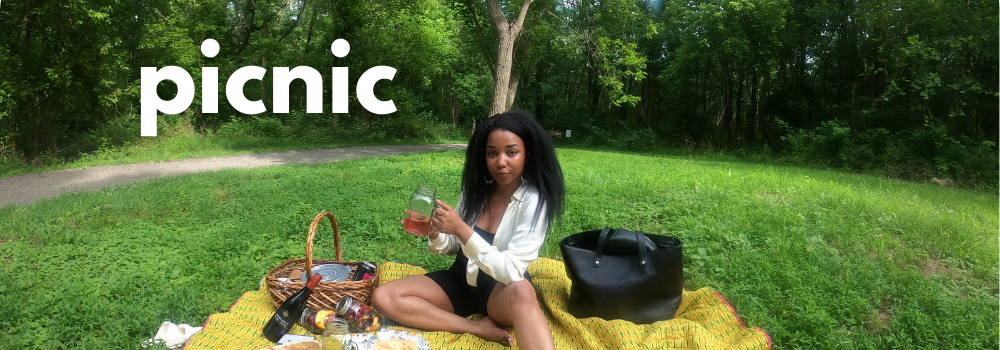
When planning a picnic, it’s important to consider the location and weather, and dress
appropriately. A comfortable outfit and shoes that are suitable for the terrain are important,
along with a hat or Picnic Backpack sunglasses to protect against the sun. To get to the location, you may need to walk or hike, so be sure to wear comfortable shoes and bring any necessary equipment, like a backpack or cooler. The best time for a picnic is typically during the spring or summer
months, when the weather is warm and the days are longer. As for the actual picnic, having a Picnic Basket Set can make the experience more enjoyable, allowing you to easily transport food and drinks.
A Blanket or Outdoor Rug is also essential for a comfortable seating area, and a Portable Cooler can keep food and drinks cool and fresh. Bringing Reusable Utensils and Plates is eco-friendly and cost-effective, and a picnic backpack can be a convenient option for carrying everything you need.
Don’t forget to pack Sunscreen and Bug Spray to protect against the elements, and a Portable Bluetooth Speaker can add to the atmosphere. Outdoor Games can also be a fun addition to
the experience. Lastly, a Camera or Smartphone is a great way to capture memories and
document your picnic adventure. With these items in tow, you’re sure to have a wonderful
picnic experience full of relaxation and memories.
Safety and Risk:
Picnics are generally a safe activity, but it’s important to be mindful of potential risks. Make
sure to check the weather forecast and avoid picnicking in areas that are prone to natural
disasters such as floods, fires, or landslides. It’s also important to be aware of any potential
wildlife in the area, such as snakes, bees, or bears, and take appropriate precautions.
Difficulty Level:
Picnicking is a low difficulty activity that can be enjoyed by almost anyone. However, the
difficulty level can vary depending on the location and terrain, so it’s important to choose a
spot that is accessible and easy to navigate.
Cost:
The cost of picnicking can vary depending on the location and the items you bring with you.
While some parks and public spaces may have entrance fees, picnicking can also be a very
affordable activity. Bringing your own food and drinks can also help keep costs low.
Duration:
The duration of a picnic can vary depending on your schedule and preferences. Some people
may choose to have a short picnic over lunch, while others may make it an all-day event.
Physical Requirements:
Picnicking doesn’t require a lot of physical exertion, but it’s important to choose a location that
is accessible and easy to navigate. If you have any physical limitations, make sure to choose a
location that accommodates your needs.
Equipment and Gear:
The equipment and gear you need for a picnic will depend on the location and your
preferences. Some essential items include a picnic blanket, a cooler or insulated bag for food
and drinks, utensils and plates, napkins, sunscreen, and insect repellent. You may also want to
bring games or other activities to enjoy during your picnic.
Location:
Choosing the right location is key to having an enjoyable picnic. Look for parks, beaches, or
other outdoor spaces with ample space, good scenery, and amenities such as restrooms and
picnic tables. Some locations may require reservations or have restrictions, so make sure to
research before you go.
Reviews and Recommendations:
Before you choose a location, it’s a good idea to read reviews and recommendations from
other picnickers. You can find these online or by asking friends and family for suggestions. This
can help you choose the best spot and avoid any potential issues.
Cultural Significance:
Picnics have been a popular activity for centuries, and they hold cultural significance in many
countries and regions. In some cultures, picnics are associated with specific foods or
traditions, such as afternoon tea in England or hanami (cherry blossom viewing) in Japan.
Learning about the cultural significance of picnics can help you appreciate the activity on a
deeper level.
In conclusion, picnicking is a fun and relaxing activity that can be enjoyed by people of all
ages. By following these tips and being mindful of potential risks, you can ensure a safe and
enjoyable picnic experience.
What to wear?
There is no specific dress code for a picnic, so wear something comfortable and appropriate for the weather. For a sunny day, wear light clothes and a hat to protect your face from the sun. If it's chilly, bring a light jacket or a blanket to keep you warm.
When should I ?
Picnics are great for any time of the year, but the best time to have one is during the spring or summer when the weather is warm and sunny.
How to Get There?
As for getting there, choose a park or a location that is easily accessible by car or public transportation. If you plan to bring a lot of items, consider bringing a wagon or a cart to help transport everything.
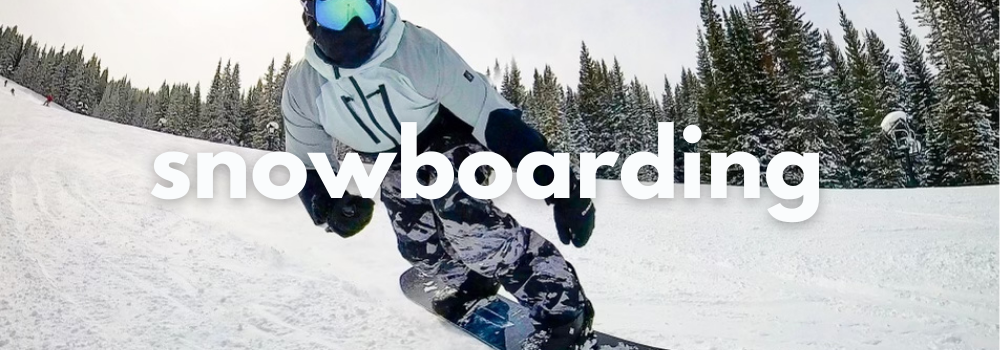
If you’re planning on hitting the slopes for some snowboarding, I’ve got some tips
for you. First things first, make sure you’ve got all the right gear. You’ll need a Snowboard,
Snowboard Boots, Snowboard Bindings, Snowboard Helmet, Snowboard Goggles, Snowboard Jacket, Snowboard Pants, Base Layers, Snowboard Gloves, and Snowboard Socks. Make sure you
invest in high-quality gear that fits well and suits the weather conditions you’ll be riding in.
When it comes to clothing, layering is key. You want to stay warm and dry, so make sure
you’ve got a good base layer, a warm jacket and pants, and waterproof gloves and socks.
Goggles are important for protecting your eyes from the sun, wind, and snow, and a helmet is
crucial for safety on the mountain.
In terms of physical requirements, snowboarding can be a demanding sport, so make sure
you’re in good physical shape and able to handle the slopes. And don’t forget to stay hydrated
and take breaks as needed.
As for location, there are plenty of great snowboarding destinations around the world, from the
Rocky Mountains in the US to the Swiss Alps. Do some research and find a spot that suits your
skill level and budget.
Finally, don’t forget to have fun! Snowboarding is an exhilarating sport that can be enjoyed by
people of all ages and skill levels. So strap on your board, hit the slopes, and enjoy the ride!
Safety and Risk:
Snowboarding comes with inherent risks, so it’s important to take necessary precautions to
prevent injuries. Always wear a helmet, wrist guards, and other protective gear. It’s also
important to stay within your skill level and follow posted trail signs and rules.
Difficulty Level:
Snowboarding can range from easy to difficult, depending on the terrain and conditions. It’s
important to start with easier runs and gradually work your way up to more challenging terrain
as your skills improve.
Cost:
The cost of snowboarding can vary greatly depending on factors such as location, equipment
rental or purchase, and lift ticket prices. Look for deals and discounts to save money on your
trip.
Duration:
A typical day of snowboarding lasts around 6-8 hours, depending on the location and
operating hours of the resort.
Physical Requirements:
Snowboarding requires a certain level of physical fitness and endurance. You’ll need strong leg
muscles and good balance to stay upright on the board. It’s a good idea to do some leg
exercises before hitting the slopes to prevent muscle fatigue.
Equipment and Gear:
The essential equipment for snowboarding includes a snowboard, boots, bindings, helmet,
goggles, and protective gear such as wrist guards and knee pads. It’s important to have
properly fitting equipment to prevent injuries and ensure a comfortable ride.
Location:
Snowboarding can be done at many ski resorts and mountain areas around the world.
Research the location and conditions before your trip to ensure the best experience.
Reviews and Recommendations:
Read reviews and recommendations from other snowboarders to get a better understanding of
the location, resort, and overall experience. This can help you make informed decisions and
ensure a successful trip.
Cultural Significance:
Snowboarding has become a popular winter sport around the world, with many events and
competitions celebrating the sport’s culture and community. It’s a great way to connect with
like-minded individuals and embrace the winter season.
In conclusion, snowboarding can be a fun and exciting winter activity with proper preparation
and precautions. Be sure to take necessary safety measures, start with easier runs, and have
properly fitting equipment to ensure a successful and enjoyable experience on the slopes.
What to wear?
When it comes to snowboarding, it's essential to dress appropriately to stay warm and comfortable. You'll need a waterproof and insulated jacket and pants, gloves or mittens, a hat or helmet, and goggles to protect your eyes from the sun and snow. It's also important to wear warm and moisture-wicking layers underneath your outerwear, such as a base layer and a fleece or sweater.
How to Get There?
To get to a snowboarding location, you'll need to find a ski resort or a mountain that offers snowboarding. You can drive to the resort or use public transportation, such as a bus or train. Some resorts also offer shuttles to transport visitors to and from the mountain.
When should I ?
Snowboarding season typically starts in late fall or early winter and can continue through the spring, depending on the location and weather conditions. It's best to check with the resort or mountain to determine when the snowboarding season begins and ends and to plan your trip accordingly. It's also important to consider the weather forecast and choose a day with favorable conditions for snowboarding, such as fresh snow and clear skies.

Embarking on an ATV ride is an exhilarating adventure. Picture yourself navigating rugged terrain and scenic landscapes aboard a powerful ATV. Essential gear becomes your trusted allies on this thrilling journey — a sturdy helmet ensuring safety, gloves providing a firm grip, and boots designed for traction on varied terrain. Ensure you’re prepared for any situation with a WARN ATV Winch Kit, ready to tackle rough terrain or assist in recovery efforts. Protect your ATV from the elements with an ATV Cover Waterproof All Weather Protection, keeping it pristine in any weather condition. Store your gear securely with a Kolpin ATV Rear Helmet Box, providing ample space for helmets and other essentials. Keep your ATV battery charged with an ATV Battery Charger and Maintainer, ensuring reliable performance on every ride. With the right gear, every ATV ride becomes an unforgettable experience. So, gear up, buckle in, and let the off-road adventure unfold!
Safety and Risk:
ATV riding carries inherent risks, so prioritize safety precautions. Always wear a helmet, gloves, and other protective gear. Adhere to your skill level and obey trail signs and rules.
Difficulty Level:
ATV riding difficulty varies based on terrain and conditions. Start with easier trails, progressively advancing to more challenging routes as your expertise grows.
Cost:
ATV riding costs fluctuate based on location, equipment, and trail access fees. Seek deals and discounts to make your trip more budget-friendly.
Duration:
A typical day of ATV riding lasts approximately 4-6 hours, contingent on trail conditions and location.
Physical Requirements:
ATV riding demands physical fitness, particularly strong upper body and core strength. Engage in exercises to improve endurance and stability before hitting the trails.
Equipment and Gear:
Essential ATV riding gear includes an ATV, boots, helmet, goggles, and protective gear like elbow and knee pads. Ensure proper fitting for safety and comfort.
Location:
ATV riding is possible at various off-road parks, trails, and recreational areas worldwide. Research trail conditions beforehand for an optimal experience.
Reviews and Recommendations:
Explore reviews from fellow ATV riders to gain insights into trails, parks, and overall experiences. Informed decisions contribute to a successful ride.
Cultural Significance:
ATV riding has gained popularity globally, with events and competitions celebrating its culture and community. Connect with like-minded enthusiasts and embrace the thrill of off-road adventures.
My Guide – Muhamed Niang
All-Terrain Vehicles known as ATV’s are motorized vehicles designed with four Tires with handle bars for steering control. Generally you can experience ATV rides across beautiful landscapes including but not limited to the desert, beach, and jungle. A benefit to partaking in ATVing is experiencing adrenalin rush and exploration.
Mohamed Niang recalls his first experience ATVing while he was vacationing in Cappadocia, Turkey with his brother. He looked for things to do in the area using the Airbnb app.
It was very affordable costing $20 USD for transportation, food, and the excursion. A bus picked them up from their hotel in Göreme, Turkey taking them to an open desert area downtown. Being that this event took place during the pandemic they were required to wear their masks while riding their quad bikes. The masks ended up protecting them from the dust getting onto their faces. It lasted for about 2 hours as they toured the valleys of the Cappadocia region. Mohamed’s favorite valley was the love valley.
During the organized tour they would spend about 10 minuets off of their quad bikes taking in each valley. In the middle of the tour they spent 30 mins attending a gypsy party. And at the end of the experience the organizes used a air pump to blow the dust off of the participants. The most exicitng part of this experiece for Mohamed was the astonishing view. Imagine he rode his quad bike experiencing a mountain view of the beautiful sunset as horses walked by. Mohamed recommends you have fun trying your own little stunts like drifting. You don’t have to follow the guides directly but make sure you’re not excessive like doing wheelies or anything. They make you sign a waiver, provide you with a ATV Helmet with Goggles and Gloves, and they give you a hairnet.
There was two guides with Mohamed’s group; a guide in the front of their group and a guide behind their group. Travelers’ insurance is something you could get if you know you’ll be partaking in activities with high thrills. On these type of excursions you can connect with other travelers. Mohamed recalls meeting people from all over the world from America, South-East Asia and France. He wasn’t able to make any friends during this experience because he had to leave Turkey the same night. After leaving the excursion he ended up at the airport super dusty which surprisingly did not stand out. People go to Cappadocia, Turkey for these experiences so there were other people at the airport in similar circumstances.
Mohamed suggests for any excursions you do, you should have whats app because most people will contact you by text for coordination so it makes for easy communication. Experience things with no expectations because Mohamed expected his second time ATVing to be exactly like his time in Turkey and it was nothing like that. His second time was in Morocco and it was a pleasant surprise but if he hadn’t been comparing it the whole time he would have been able to appreciate it for the unique experience it was. Mohamed believes that buying ATVs and setting up your own excursion could be very lucrative. After buying the ATVs your return on investment could be high when you break down the operating costs.
Mohamed recommends using the Airbnb app to find things to do based on ease of use as they have a well structured search engine to find things to do during the time period of your stay. It’s well organized and trustworthy using a vendor on airbnb. They typically have reasonable pricing that coincides with the cost of living as opposed to potentially being up-charged for tourism and scammed finding a vendor on your own. Typically if you are in a tourist area vendors will approach you with tourist attractions or you can seek out tourist options from your hotel directly and or visiting a tourist shop or kiosk.
What to Wear?
Layered athletic wear so that you can adapt to your changing body temperature.
How to Get There?
Set up transportation with your ATV event organizer.
When Should I Visit?
June, September
Afternoon Sunset Time
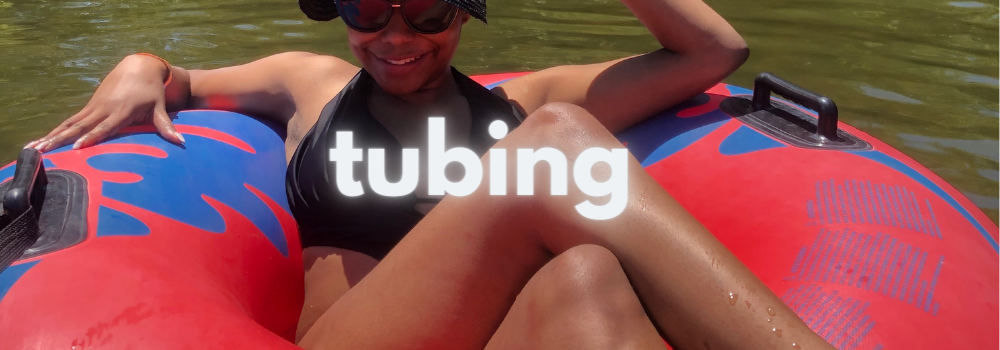
If you’re planning on tubing down a river, there are a few essential items you’ll want to bring
along to ensure you have a fun and safe experience. First, you’ll need a reliable Inflatable Tube, which can easily be purchased online. It’s also important to have a Life Jacket, even if you’re a
strong swimmer, as river currents can be unpredictable. To protect your belongings, consider
investing in a Universal Waterproof Phone Case and Dry Bag. Sunscreen, Water Shoes, a Hat, and Sunglasses are also must-haves for any river tubing adventure to protect yourself from the
sun’s harmful rays. Don’t forget to bring along some Snacks and Drinks to keep you fueled
throughout the day, and a Waterproof Bluetooth Speaker to provide some tunes while you float
along the river. With these essential items, you’ll be prepared for a fun and memorable tubing
adventure.
Safety and Risk:
While floating in a tube down a slow-moving stream may seem low-risk, it’s important to keep
safety in mind. Always wear a lifejacket, keep an eye on the weather, and be aware of any
potential hazards in the water, such as rocks or downed trees.
Difficulty Level:
This activity is generally low difficulty, but it’s important to be comfortable with water and be
able to swim if needed.
Cost:
This activity is typically low cost, as it only requires a tube and a life jacket. Some parks or
rental facilities may charge a small fee for parking or tube rental.
Duration:
The duration of this activity can vary depending on the length of the stream and how long you
choose to float. It’s always a good idea to have a general idea of how long you plan to be on
the water and let someone know your plans.
Physical Requirements:
This activity doesn’t require a lot of physical ability, but it’s important to be able to get in and
out of the tube and be comfortable sitting for an extended period of time.
Equipment and Gear:
The main equipment needed for this activity is a tube and a lifejacket. It’s also a good idea to
bring sunscreen, sunglasses, and a hat to protect yourself from the sun.
Location:
This activity can be done on any slow-moving stream or river with public access. It’s important
to research the area beforehand and be aware of any potential hazards.
Reviews and Recommendations:
Before heading out, read reviews of the stream or river you plan to float on. Check for any
potential hazards or issues that others have encountered.
Cultural Significance:
Floating downstream on a tube is a beloved summer pastime in many parts of the world,
particularly in the United States. It’s a great way to connect with nature and spend time with
friends and family.
In summary, floating downstream on a tube can be a relaxing and enjoyable summer activity.
Remember to prioritize safety, be aware of any potential hazards, and bring along the
necessary equipment to ensure a fun and stress-free day on the water.
What to wear?
Wear comfortable clothing that you don't mind getting wet, such as swimwear, shorts, and a tshirt. It's also a good idea to bring a hat or sunscreen to protect your skin from the sun. Water shoes or sandals with good grip are recommended to prevent slipping on wet surfaces.
When should I ?
Tubing on a lake is best done during warm weather months when the water is comfortable for swimming. It's also important to check the weather forecast beforehand to avoid going on a day with inclement weather or rough water conditions.
How to Get There?
The location of the lake where tubing is available will determine the best way to get there. If it is a popular spot, there may be organized tours or transportation services available. Alternatively, you may need to rent a car or use a ridesharing service to get to the location.

Going on a snowmobile ride is pretty exciting. Just imagine cruising through snow-covered landscapes on the back of a reliable snowmobile. Essential gear becomes your trusted companions in this icy journey — snug base layer providing insulation, a helmet ensuring safety, and gloves granting you a secure grip. Your boots should be designed for the snowy terrain they will keep you firmly grounded, and you should be wearing thermal socks. A high-quality jacket becomes your shield against the cold winds. As you hit the trails, the right layers, including snow pants, waterproof gloves and boots, play a crucial role in keeping you warm and dry, allowing you to fully immerse yourself in the snowmobiling experience. So, strap on that helmet, slide into your gloves and boots, and let the adventure begin!
Ensure you are in good physical condition to handle the varied terrains. Stay hydrated and take breaks as needed to maintain your stamina. Consider your snowmobiling destination carefully. Whether it’s the vast terrains of the Rocky Mountains or the picturesque Swiss Alps, choose a location that matches your skill level and budget. Research thoroughly to find the perfect spot for your snowmobiling adventure. Above all, remember to savour the experience! Snowmobiling is an exhilarating activity suitable for individuals of all ages and skill levels. Strap on your gear, hit the snowy trails, and relish the ride!
Safety and Risk:
Snowmobiling carries inherent risks, so prioritize safety precautions. Always wear a helmet, gloves, and other protective gear. Adhere to your skill level and obey trail signs and rules.
Difficulty Level:
Snowmobiling difficulty varies based on terrain and conditions. Start with easier routes, progressively advancing to more challenging paths as your expertise grows.
Cost:
Snowmobiling costs fluctuate based on location, equipment, and lift ticket prices. Seek deals and discounts to make your trip more budget-friendly.
Duration:
A typical day of snowmobiling lasts approximately 6-8 hours, contingent on the resort’s operating hours and location.
Physical Requirements:
Snowmobiling demands physical fitness, particularly strong leg muscles and good balance. Engage in leg exercises before hitting the trails to prevent muscle fatigue.
Equipment and Gear:
Essential snowmobiling gear includes a snowmobile, boots, helmet, goggles, and protective gear like wrist guards and knee pads. Ensure proper fitting for safety and comfort.
Location:
Snowmobiling is possible at various ski resorts and mountainous regions worldwide. Research conditions beforehand for an optimal experience.
Reviews and Recommendations:
Explore reviews from fellow snowmobilers to gain insights into locations, resorts, and overall experiences. Informed decisions contribute to a successful trip.
Cultural Significance:
Snowmobiling has gained popularity globally, with events and competitions celebrating its culture and community. Connect with like-minded enthusiasts and embrace the winter season.
In conclusion, with proper preparation and precautions, snowmobiling promises a thrilling winter adventure. Prioritize safety, begin with manageable routes, and ensure well-fitted equipment for a delightful experience on the snow-covered trails.
—
What to wear?
Dress warmly for snowmobiling with an insulated suit, helmet, goggles, gloves, and boots.
How to Get There?
Most places that offer snowmobile rentals will not be accessible through public transportation and will will be quite expensive to rely on a taxi to get to. You will need a car, rental car, or accommodations through your hotel or lodging in order to get to the facility offering this service.
When should I ?
Choose the winter months for optimal snow conditions. January and February are usually prime season.

Rock climbing is a rewarding activity. It consists of climbing up, down or across rock formations. The goal is to reach the endpoint of a defined formation without falling. The main benefit to look forward to after rock climbing is that you will relieve stress, build confidence by pushing yourself beyond limits you created in your head, and burn some calories.
Safety and Risk:
Rock climbing demands utmost attention to safety. Always carry a First Aid Kit to address any injuries or mishaps that may occur during your ascent. The reassuring sound of a Whistle can be your lifeline in emergencies, ensuring you’re not lost or unheard in challenging terrain.
Difficulty Level:
The difficulty level in rock climbing varies, from beginner-friendly routes to advanced challenges that test even the most seasoned climbers. Choosing the right gear, including a proper Climbing Harness and well-fitted Climbing Shoes, is crucial to match the intensity of your chosen climb.
Cost:
Investing in quality equipment, such as a reliable GPS Device, Carabiners, and a Belay device, is essential for a safe and enjoyable rock climbing experience. While initial costs may seem high, the investment in durable gear pays off in the long run.
Duration:
Rock climbing adventures can range from a few hours to multi-day excursions. Pack accordingly, considering essentials like a compact First Aid Kit and a lightweight Crash Pad for extended climbs.
Physical Requirements:
Rock climbing demands physical strength, agility, and endurance. Ensure you have a well-fitted Climbing Harness, supportive Climbing Shoes, and a reliable Crash Pad to minimize the impact on your body during climbs.
Equipment and Gear:
Embarking on a rock climbing journey requires a carefully curated arsenal to ensure both safety and success. Strap on your Climbing Harness and lace up those trusty Climbing Shoes for a start. Pack your First Aid Kit and a reliable GPS device,
vital for emergencies and navigation. Safeguard yourself with a Whistle
as a signaling tool in case communication falters amidst the rugged
terrain. The Crash Pad becomes your cushion against unplanned descents, and the Nut Tool is essential for removing stubborn wedged protection. Secure your connection with Carabiners and Quickdraws.
Location:
Choosing the right climbing location is paramount. Utilize your GPS Device to navigate and explore diverse terrains. The choice of Carabiners and Quickdraws will depend on the specific challenges presented by each location.
Reviews and Recommendations:
Before embarking on your climbing adventure, consult reviews and recommendations from experienced climbers. Their insights can guide you in selecting the most suitable Carabiners, Quickdraws, and other gear for your chosen route.
Cultural Significance:
Beyond the physical challenges, rock climbing often holds cultural significance in various communities. Understand and respect the traditions and history associated with the climbing areas you explore.
In conclusion
Rock climbing is not just a sport; it’s a thrilling journey that demands preparation, precision, and passion. Invest in the right gear, from a sturdy Climbing Harness to grippy Climbing Shoes, and prioritize safety with essentials like a First Aid Kit and a trusty GPS Device. Let the ascent begin!
My Guide – Kenya
Kenya personally enjoys rock climbing because she enjoys the reward of overcoming a fear. Every time you go further up and look down your nerves begin to give you doubt that maybe you should get down. Allowing yourself to keep going is rewarding once you actually reach the top and prevail. Kenya reflects on her first time going rock climbing with her best friend Aurelie who motivated her to overcome her fears. She has a very intense fear of heights and after failing to make to the top during the first round it was her best friend that motivated her to keep going on other rounds. Seeing her fearlessness motivated her to get to the top by any means necessary moving forward. She never let her fear get the best of her for the remaining indoor climbs.
One way you can get into rock climbing is by finding a local indoor rock climbing gym in your area. The one that Kenya started out in is called Earth Trek located in Alexandria, Virginia. After a beginners course she opted to get more equipped and then took a rope tying course as well. She can’t wait until she has the confidence and skill to dangle herself down the mountainous Great Falls Park, located in Great Falls Virginia as she recalls seeing someone rock climbing on one of her hikes throughout the park during Spring. It was so bad ass and inspiring. Stay tuned for her updated post once she completes that goal and finally checks that off her bucket list.
When Should I?
Ideal climbing conditions vary based on location, but generally, mornings or late afternoons are preferred to avoid extreme temperatures. Check weather forecasts and plan your climb accordingly.
How to Get There?
Utilize your GPS Device to navigate to the climbing location. Consider transportation options and plan your journey, ensuring a smooth and timely arrival for your rock climbing adventure.
What to wear?
Selecting the appropriate attire is crucial for a comfortable climb. Opt for moisture-wicking clothing, a well-fitted Climbing Harness, and durable Climbing Shoes that provide support and grip.

When it comes to camping, it’s important to be prepared with the right gear to make your trip comfortable and enjoyable. A good Coleman Sundome Camping Tent, sleeping bag, and sleeping pad are essential for a good night’s sleep, while a Coleman Gas Camping Stove and cooler will ensure that you can prepare and store your meals properly. It’s also important to pack a headlamp or flashlight for navigating around the campsite at night, and insect Bug repellant bracelet to keep pesky bugs away. A first aid kit and multitool or pocket knife are also must-haves for any camping trip. Finally, a sturdy Osprey Atmos AG 65 Backpack will allow you to carry all your gear and supplies on hikes or around the campsite. With these 10 items, you’ll be well on your way to a great camping experience.
Safety and Risk:
Camping can involve some risks, such as exposure to extreme weather
conditions or wildlife encounters. To ensure a safe camping trip, it’s important to research the
area you’ll be visiting and any potential hazards, and to pack appropriate safety gear such as a
first aid kit, emergency supplies, and bear spray.
Difficulty Level:
The difficulty level of camping can vary depending on the location and type of
camping you choose. Backpacking and wilderness camping can be more challenging than car
camping, which involves driving right up to your campsite. Be sure to choose a level of
difficulty that matches your experience and physical ability.
Cost:
Camping can be a cost-effective way to travel, but the cost can vary depending on the
type of camping and equipment you need. Basic camping gear such as a tent, sleeping bags,
and a stove can be affordable, but more advanced gear such as backpacks or specialty
camping equipment can be more expensive.
Duration:
The length of your camping trip is entirely up to you. Some people prefer a quick
weekend getaway, while others opt for longer trips of a week or more. Be sure to plan your trip
according to the time you have available and the activities you want to do.
Physical Requirements:
Camping can be a physically demanding activity, especially if you’re
hiking or backpacking to your campsite. Be sure to consider your fitness level and any physical
limitations before planning your trip.
Equipment and Gear:
The right equipment can make or break your camping trip. Basic gear
includes a tent, sleeping bags, and a camping stove, but you may also need additional
equipment such as a backpack, hiking boots, or a Coleman Portable Camping Quad Chair LifeStraw Personal Water Filter system depending on the type of camping you choose. When camping, it’s convenient to have gear like the Brumate Brutank and Brumate Backtap to keep beverages cold and easily accessible during outdoor adventures.
Location:
The location you choose for your camping trip can greatly impact your experience.
Whether you prefer camping near water or in the mountains, research the area ahead of time to
determine the best location for your needs.
Reviews and Recommendations:
Before heading out on your camping trip, it’s helpful to read
reviews and recommendations from other campers who have visited the area. This can help
you determine the best campsites, activities, and gear to bring.
Cultural Significance:
Camping has a rich cultural significance in many parts of the world. It
offers a chance to connect with nature and disconnect from the stresses of modern life. It’s
important to respect the environment and local culture when camping, and to leave the
campsite better than you found it.
In conclusion, camping can be a fun and rewarding activity for those who are properly
prepared. By considering the above factors and doing your research, you can ensure a safe
and enjoyable camping trip that allows you to connect with nature and create lasting
memories.
What to wear?
When camping, it's important to wear comfortable and weather-appropriate clothing. It's best to dress in layers so you can adjust your clothing as the temperature changes. It's also a good idea to wear sturdy and waterproof footwear.
When should I ?
The best time to go camping depends on the location and climate. In general, the most popular times to camp are during the summer months when the weather is warm and dry. However, camping can also be enjoyable during the spring and fall when the weather is cooler and there are fewer crowds. It's important to research the weather patterns and seasonal conditions of your desired camping location before planning your trip.
How to Get There?
The way you get to your camping location will depend on where it is located. You can drive to many campsites, while others may require hiking or backpacking to reach. It's important to research the location beforehand and plan your transportation accordingly.
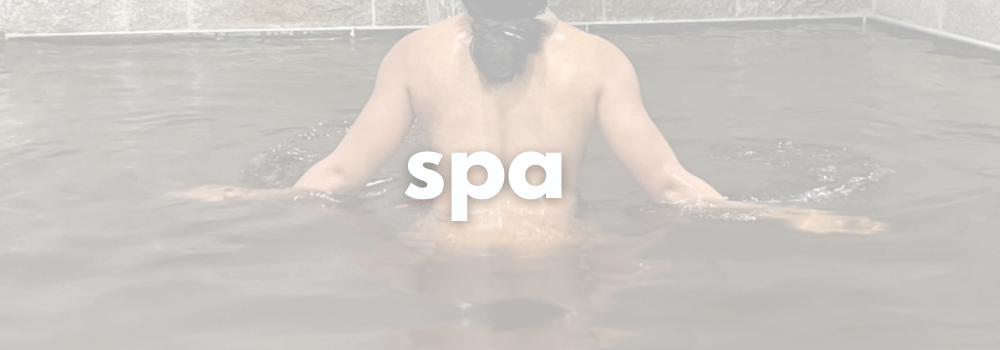
When it comes to visiting a spa, it’s all about relaxation and rejuvenation. Be sure to do some
research on the spa beforehand and make a reservation to ensure you get the treatments and
services you want. Wear comfortable clothing to the spa and bring along your spa essentials
like a Bathrobe, Slippers, and Water Bottle. If you’re unsure what treatments to get, ask the spa staff
for recommendations based on your needs and preferences. Don’t be afraid to indulge in some
self-care and take advantage of all the amenities the spa has to offer, like saunas, hot tubs, and
meditation rooms. And most importantly, enjoy your spa day and leave feeling refreshed and
revitalized.
Safety and Risk:
Going to a spa is generally a safe activity, but there are a few things to keep in mind to ensure
your safety. If you have any medical conditions or concerns, it’s always a good idea to speak
with your doctor before booking a spa appointment. Also, make sure you research the spa
you’re interested in and read reviews from previous customers to ensure that they follow
proper safety and hygiene protocols.
Difficulty Level:
Going to a spa is generally an easy and relaxing activity, so there is no difficulty level
associated with it.
Cost:
The cost of going to a spa can vary widely depending on the services you want to receive and
the location of the spa. It’s always a good idea to check the spa’s website or call ahead to get
an idea of the prices.
Duration:
The duration of a spa appointment can vary depending on the services you want to receive. A
typical massage appointment can last anywhere from 30 minutes to an hour, while a full spa
day can last several hours.
Physical Requirements:
There are generally no physical requirements for going to a spa, but if you have any mobility
issues or concerns, it’s always a good idea to speak with the spa staff beforehand to ensure
that they can accommodate your needs.
Equipment and Gear:
Most spas provide all the equipment and gear you’ll need for your appointment, but it’s always
a good idea to check beforehand. You may want to bring comfortable clothing to change into
or a swimsuit if you plan on using any water facilities. It’s a good idea to consider having bath salts, essential oils, a facial mask, a yoga mat, a book, and hair ties.
Location:
Spas can be found all over the world, from luxurious resorts to day spas in your local area.
Research the location you’re interested in and make sure it’s convenient for you to get to.
Reviews and Recommendations:
Before booking a spa appointment, it’s always a good idea to read reviews and
recommendations from previous customers. This will give you an idea of the quality of the
services offered and the customer service provided by the spa.
Cultural Significance:
Spas have been around for centuries and are found in many cultures around the world. They
can be a great way to relax and rejuvenate both physically and mentally, and are often
associated with wellness and self-care.
Overall, going to a spa can be a wonderful way to pamper yourself and take some time to
relax. Just be sure to do your research beforehand and communicate any concerns or needs
with the spa staff.
What to wear?
When going to a spa, it's important to wear comfortable, loose-fitting clothing that will allow you to fully relax and move easily. Consider bringing a change of clothes if you plan on using the spa's amenities such as hot tubs or saunas. You may also want to bring a swimsuit if you plan on using the pool or other water facilities. Many spas provide robes and slippers for their guests, so check with the spa before packing to see if you need to bring your own.
When should I ?
A spa day can be a great way to relax and unwind during a vacation or weekend getaway. Consider scheduling your spa day towards the middle or end of your trip to fully decompress and take advantage of all the amenities the spa has to offer.
How to Get There?
Most spas are located in hotels or resorts, so check with your accommodation to see if they have a spa on-site or nearby. If not, research spas in the area and book a reservation ahead of time. Consider booking transportation to and from the spa to avoid any stress or hassle.

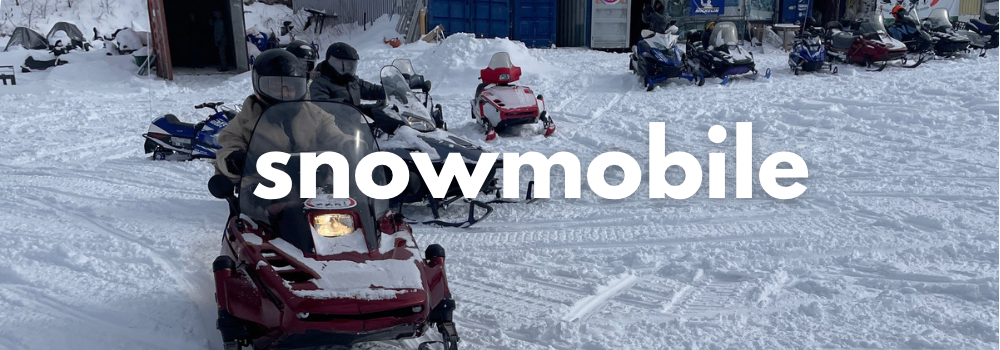
Going on a snowmobile ride is pretty exciting. Just imagine cruising through snow-covered landscapes on the back of a reliable snowmobile. Essential gear becomes your trusted companions in this icy journey — snug base layer providing insulation, a helmet ensuring safety, and gloves granting you a secure grip. Your boots should be designed for the snowy terrain they will keep you firmly grounded, and you should be wearing thermal socks. A high-quality jacket becomes your shield against the cold winds. As you hit the trails, the right layers, including snow pants, waterproof gloves and boots, play a crucial role in keeping you warm and dry, allowing you to fully immerse yourself in the snowmobiling experience. So, strap on that helmet, slide into your gloves and boots, and let the adventure begin!
Ensure you are in good physical condition to handle the varied terrains. Stay hydrated and take breaks as needed to maintain your stamina. Consider your snowmobiling destination carefully. Whether it’s the vast terrains of the Rocky Mountains or the picturesque Swiss Alps, choose a location that matches your skill level and budget. Research thoroughly to find the perfect spot for your snowmobiling adventure. Above all, remember to savour the experience! Snowmobiling is an exhilarating activity suitable for individuals of all ages and skill levels. Strap on your gear, hit the snowy trails, and relish the ride!
Safety and Risk:
Snowmobiling carries inherent risks, so prioritize safety precautions. Always wear a helmet, gloves, and other protective gear. Adhere to your skill level and obey trail signs and rules.
Difficulty Level:
Snowmobiling difficulty varies based on terrain and conditions. Start with easier routes, progressively advancing to more challenging paths as your expertise grows.
Cost:
Snowmobiling costs fluctuate based on location, equipment, and lift ticket prices. Seek deals and discounts to make your trip more budget-friendly.
Duration:
A typical day of snowmobiling lasts approximately 6-8 hours, contingent on the resort’s operating hours and location.
Physical Requirements:
Snowmobiling demands physical fitness, particularly strong leg muscles and good balance. Engage in leg exercises before hitting the trails to prevent muscle fatigue.
Equipment and Gear:
Essential snowmobiling gear includes a snowmobile, boots, helmet, goggles, and protective gear like wrist guards and knee pads. Ensure proper fitting for safety and comfort.
Location:
Snowmobiling is possible at various ski resorts and mountainous regions worldwide. Research conditions beforehand for an optimal experience.
Reviews and Recommendations:
Explore reviews from fellow snowmobilers to gain insights into locations, resorts, and overall experiences. Informed decisions contribute to a successful trip.
Cultural Significance:
Snowmobiling has gained popularity globally, with events and competitions celebrating its culture and community. Connect with like-minded enthusiasts and embrace the winter season.
In conclusion, with proper preparation and precautions, snowmobiling promises a thrilling winter adventure. Prioritize safety, begin with manageable routes, and ensure well-fitted equipment for a delightful experience on the snow-covered trails.
GUIDE—Kenya
We road snowmobiles in Barrie, Ontario, Canada with this company called Smart Adventures. It was about 2 hours north of Toronto, truly a unforgettable electrifying experience. As far as pricing goes you should expect to pay around ~$200 USD per person for 2 hours of riding with a $1,000 damage pre-authorization; which is refunded after the tour. What I loved about this tour is that it started with lessons that took about 15mins. These lessons really helped me so much along the way especially for a beginner. Riding a snowmobile is nothing like riding a motorcycle, atv, or jet ski it is completely unique. I was very shocked to find out you have to use your body to maneuver the vehicle. For example, to turn right you shift your body to the right as well as turning the handle bars in that direction. When you are going up hill you lean your body in the direction of uphill. Make sure you listen to instructors directions for your safety. I absolutely recommend this experience for sure.
What to wear?
Dress warmly for snowmobiling with an insulated suit, helmet, goggles, gloves, and boots.
How to Get There?
Most places that offer snowmobile rentals will not be accessible through public transportation and will will be quite expensive to rely on a taxi to get to. You will need a car, rental car, or accommodations through your hotel or lodging in order to get to the facility offering this service.
When should I ?
Choose the winter months for optimal snow conditions. January and February are usually prime season.


Embarking on a brisk walk is an invigorating experience where essential gear, from comfortable shoes to a a water bottle, becomes your reliable companions against the elements, allowing you to fully immerse yourself in diverse landscapes; so lace up those shoes, don your cap and sunglasses, and let the adventure begin! Ensure you’re physically prepared for varied terrain, stay hydrated, and choose your walking destination carefully, whether it’s rugged trails or scenic pathways, to fully savor the rejuvenating experience of walking in nature.
Safety and Risk:
Walking outdoors carries inherent risks, so prioritize safety precautions. Wear appropriate footwear and clothing, and be mindful of your surroundings. Don’t forget sunscreen as well!
Difficulty Level:
Walking difficulty varies based on terrain and distance. Start with easier routes, gradually advancing to more challenging trails as your fitness improves.
Cost:
Walking costs are generally low, requiring minimal equipment. Consider expenses for transportation and any park or trail fees.
Duration:
A typical walking excursion lasts approximately 1-3 hours, depending on the chosen route and your pace.
Physical Requirements:
Walking demands basic physical fitness and endurance. Engage in regular walking and stretching exercises to prepare for longer treks.
Equipment and Gear:
Essential walking gear includes comfortable shoes, weather-appropriate clothing, a hat, sunglasses, sunscreen, and a water bottle. Choose gear that suits your walking environment and conditions. Track your steps with a fitness watch.
Location:
Walking opportunities abound in parks, nature reserves, urban trails, and countryside paths worldwide. Research trail conditions and accessibility beforehand for an enjoyable experience.
Reviews and Recommendations:
Explore reviews from fellow walkers to discover hidden gems and popular routes. Local hiking clubs and online forums are great resources for insights and recommendations.
Cultural Significance:
Walking is a universal activity celebrated for its health benefits and connection to nature. Join walking groups or participate in walking events to immerse yourself in the walking community.
In conclusion, with proper preparation and a spirit of adventure, walking offers a refreshing outdoor experience. Prioritize safety, choose suitable routes, and embrace the beauty of nature as you explore the trails.
What to wear?
For walking, wear comfortable shoes, weather-appropriate clothing, a hat, sunglasses, and sunscreen to ensure a pleasant and safe outdoor experience.
How to Get There?
To reach your walking destination, plan your transportation method in advance, whether it's driving, using public transportation, or walking from your starting point.
When should I ?
Choose the time to go walking based on your personal preference and the weather conditions, aiming for periods with comfortable temperatures and favorable visibility.
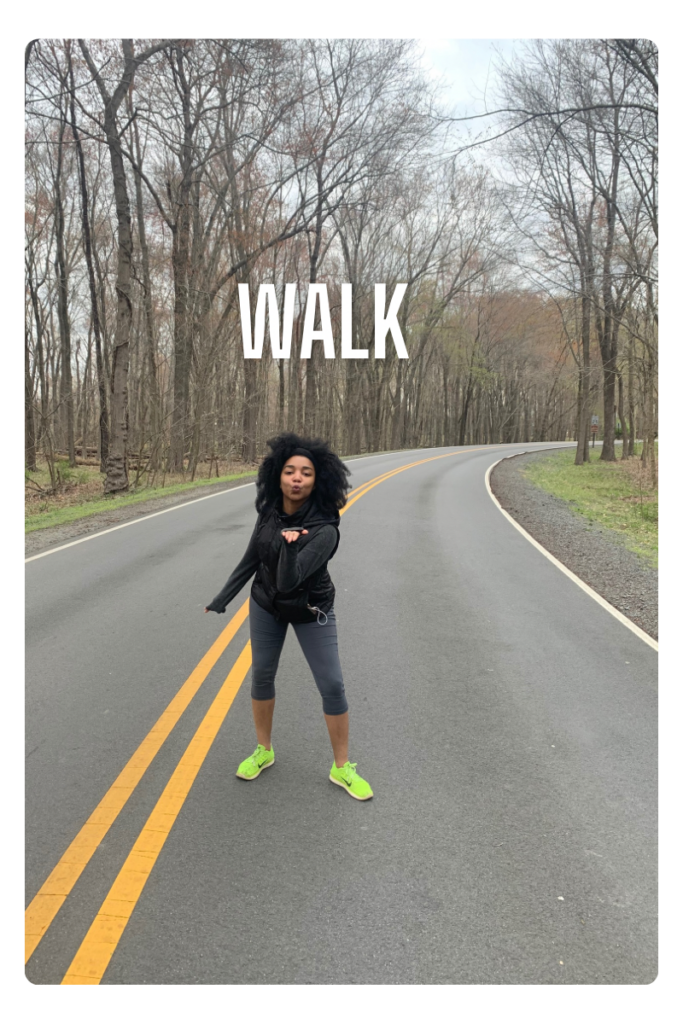

National Basketball Association known as NBA is a professional basketball league in North America composed of 30 teams. It is one of the major professional sports leagues in the United States and Canada and the premier men’s professional basketball league in the world. NBA games are hosted in a stadium that can fit between 16,000 and 20,000 people. A benefit to attending a NBA game is to connect with people through the power of basketball.
Safety and Risk:
When playing basketball, safety should always come first. Warm up properly to prevent injuries and wear appropriate gear like the Nike Men’s LeBron James Los Angeles Lakers Jersey for comfort and support. Always be mindful of your skill level and the rules of the game to avoid accidents on the court.
Difficulty Level:
The difficulty of basketball varies depending on factors like skill level and competition. Start with casual games or practice sessions to hone your skills before joining more competitive matches. As your expertise grows, challenge yourself with higher-level games and tournaments.
Cost:
Playing basketball can be affordable with minimal costs for equipment like the Spalding NBA Street Basketball and access to public courts. Consider investing in quality gear like the Wilson Evolution Game Basketball for improved performance, but also explore free or low-cost options available in your community.
Duration:
A basketball game typically lasts around 30-40 minutes per half, with additional time for breaks and halftime. Practice sessions can vary in duration based on individual or team goals, ranging from a few minutes to several hours.
Physical Requirements:
Basketball requires physical fitness, including agility, strength, and endurance. Engage in exercises to improve your cardiovascular health, flexibility, and coordination to excel on the court.
Equipment and Gear:
Essential basketball gear includes a basketball hoop, appropriate footwear, and a quality basketball like the Spalding NBA Street Basketball or the Wilson Evolution Game Basketball. Invest in gear that fits properly and enhances your performance while minimizing the risk of injury.
Location:
Basketball can be played on outdoor courts, indoor gyms, or even makeshift hoops in driveways or parks. Explore various locations to find the best environment for your game, considering factors like accessibility, lighting, and court conditions.
Reviews and Recommendations:
Seek advice and feedback from fellow basketball players to discover new courts, leagues, and training opportunities. Online forums, community groups, and social media platforms can provide valuable insights and recommendations.
Cultural Significance:
Basketball has a rich cultural heritage, with a global community of players and fans celebrating the sport’s diversity and inclusivity. Embrace the cultural significance of basketball by connecting with fellow enthusiasts, attending games, and participating in community events. Many people enjoy playing a basketball video game such as NBA 2k24.
In conclusion, basketball offers a thrilling and accessible sport for players of all ages and skill levels. Prioritize safety, invest in quality gear, and embrace the cultural significance of the game to fully enjoy the basketball experience.
My Guide – Aurélie Irène
Aurélie Irène recalls her first experience attending a professional basketball game in 2018 as she attended a Wizards vs Lakers game at the Capital One arena in Washington D.C. sitting middle row. She enjoyed that experience with her older brother and her father. They peaked her initial interest in the sport as she grew up watching basketball with them. During the NBA game she sat in the middle section where she could see a clear view of the players. Recently she went to a Houston Rockets vs Miami Heat game and sat court-side.
If you are a huge basketball fan she recommends you sit in either row A-Z which would position you in the middle or, court-side. This way you can have the best experience as you’ll be able to see the players clearly and understand what is going on. In comparison to other sporting events she has attended she believes that basketball is really easy to understand and easy to pick up. When attending a baseball or football game you might find yourself being overly social and not really focusing on the game so much. At a basketball game there is not much socializing going on because most people are actually following what is going on in the game.
During her court-side experience she noticed that people generally did not spent much time in the suites. People wanted to focus on the game so they would rush and grab food and drinks very quickly. She attended this game with her friend Kierra and tickets were about $400 each. When comparing her experience with her friend verses with her family Aurélie stated “going with a friend is a more relaxing environment rather than being super “GO TEAM GO” with family”. You are really just enjoying the sport when you attend with a family member whereas with a friend you are socializing and enjoying the sport.
When deciding what to wear keep in mind that the NBA is known for fashion. Especially if you are sitting court-side or a little bit above that section fans are known to be styled. If you are going to wear heels make sure they are comfortable because there are stairs to get to your seats. In sections A-D and along the court-side have people that come around asking for drink orders.
Aurélie advises people to arrive early so that they can see the NBA players warm up. Also if you are planning to take photos you need to do it when you get there. After the game the stadium is cleared out very quickly so you will not have time for photos. She advises one should look into the bag size policy of the arena ahead of time so that you can be prepared. Upon entry you want to make sure you have your ticket ready to be scanned to make entry run smoothly. If you like socializing she recommends getting seats that come with a suite access because there are not much socializing opportunities otherwise.
What to Wear?
Play it safe by wearing whatever jersey you’re routing for. If you’re sitting in sections A-D and court side show your style and be cautious there will be stairs to walk up and down.
How to Get There?
Take a uber or taxi if it is located downtown or carpool if available to minimize parking.
When Should I Visit?
Attend in March before playoffs in April.

When it’s time to hit the field, having the right gear can make all the difference in your soccer experience. Start by selecting the perfect Soccer Ball, ensuring it’s properly inflated and ready for action. If you’re looking to hone your skills on your own, a Solo Soccer Trainer is a valuable tool for practicing dribbling, passing, and shooting without a partner. Keep all your essentials organized and easily accessible with an Adidas Backpack, featuring compartments for your ball, water bottle, and personal belongings. To take your training to the next level, set up a Soccer Goal and work on your accuracy and power with every shot. And of course, don’t forget to invest in a pair of high-quality Soccer Socks to keep your feet comfortable and supported throughout the game. With the right equipment at your disposal, you’ll be prepared to take on any challenge and make the most of your time on the soccer field.
Safety and Risk:
Playing soccer comes with inherent risks, so prioritizing safety measures is paramount. Always wear appropriate protective gear such as shin guards, cleats, and a well-fitted helmet when necessary. Follow the rules of the game and respect the abilities of your fellow players to minimize the risk of injury.
Difficulty Level:
The difficulty of playing soccer can vary depending on factors such as the skill level of the players, the type of field, and the intensity of the match. Beginners should start with basic drills and gradually progress to more challenging exercises as their skills improve.
Cost:
The cost of playing soccer can vary widely depending on factors such as league fees, equipment expenses, and travel costs for tournaments. Look for local clubs or community programs that offer affordable options for players of all ages and skill levels.
Duration:
A typical soccer match lasts for 90 minutes, divided into two 45-minute halves with a halftime break. However, the duration of training sessions or recreational games can vary depending on the preferences of the participants and the availability of playing facilities.
Physical Requirements:
Soccer requires a combination of physical attributes such as endurance, agility, speed, and coordination. Players should engage in regular cardiovascular exercise, strength training, and flexibility drills to maintain peak fitness and reduce the risk of injury on the field.
Equipment and Gear:
Essential soccer gear includes a jersey, shorts, socks, shin guards, cleats, and a soccer ball. Goalkeepers may also require additional equipment such as gloves and padded clothing. Make sure that all gear fits properly and is in good condition to ensure maximum comfort and protection during play.
Location:
Soccer can be played on a variety of surfaces including grass, turf, or indoor courts, making it accessible to people around the world. Whether you’re playing in a local park, a school field, or a professional stadium, always be mindful of the playing conditions and any potential hazards on the field.
Reviews and Recommendations:
Seek advice and feedback from coaches, teammates, and other players to improve your skills and knowledge of the game. Watching professional matches or instructional videos can also provide valuable insights into strategy, tactics, and technique.
Cultural Significance:
Soccer is more than just a sport—it’s a global phenomenon that transcends cultural boundaries and unites people from diverse backgrounds. From local community games to international tournaments like the FIFA World Cup, soccer brings people together to celebrate the beautiful game and the values of teamwork, perseverance, and sportsmanship.
In conclusion, soccer offers an exhilarating experience for players of all ages and abilities. By prioritizing safety, practicing regularly, and embracing the spirit of the game, you can enjoy the thrill of competition while fostering lifelong friendships and memories on the field.
What to wear?
When getting ready for soccer, dress in a comfortable jersey, shorts, and moisture-wicking socks for optimal performance. Protect your shins with well-fitted shin guards and choose cleats suitable for the playing surface. Goalkeepers should equip themselves with goalkeeper gloves for added hand protection. Consider wearing compression gear for extra support and weather-appropriate clothing to stay comfortable. Ensure all gear fits well and is in good condition before hitting the field.
When should I ?
Choose the best time of year to play soccer based on factors like weather, personal preference, and facility availability. Whether you opt for milder seasons like spring and fall or embrace the challenges of summer heat or winter chill, prioritize what works best for your schedule and enjoyment of the game.
How to Get There?
You can access soccer facilities through local clubs, schools, or community centers. Additionally, many parks and recreational areas provide soccer fields for public use. Check online directories or contact local organizations to find nearby fields and facilities. Prioritize booking in advance, especially for league matches or tournaments, to secure your spot and avoid scheduling conflicts.

First, make sure you bring a Flashlight – some of these rooms can be pretty dimly lit, and you’ll
need all the light you can get to find clues. Also, bring a Small Notebook And Pen to keep track of all
the information you’ll be gathering. Walkie-Talkies can be really useful if you’re doing a bigger
room, so you can communicate with your teammates without having to shout across the room.
Another thing to consider is a UV Flashlight – sometimes there are hidden messages or clues
written in invisible ink that can only be seen under UV light. And if you’re feeling really
adventurous, you could even bring a Lock Picking Kit – you never know when it might come in
handy!
Aside from those gadgets, make sure you’re wearing Comfortable Clothes And Shoes – you’ll be
moving around a lot and you don’t want anything to slow you down. And bring a Snacks and Water Bottle to keep you hydrated and energized throughout the game. But most importantly, bring A Sense Of Adventure And Fun! These rooms can be challenging, but they’re meant to be enjoyed. So don’t stress too much, and just have a great time.”
Safety and Risk:
Escape rooms are generally safe, but there are a few things to keep in mind. It’s important to
listen to the game master’s instructions and not to force anything open or climb on furniture. If
you have any health conditions, make sure to check with the establishment beforehand to
ensure the activity is safe for you.
Difficulty Level:
Escape rooms can vary in difficulty level, so it’s essential to research the room’s difficulty level
and theme before booking. Some rooms may be more challenging than others, and it’s
important to choose a room that is suitable for your group’s skill level.
Cost:
Escape room prices can vary, but they typically range from $20 to $40 per person. Some
places may offer discounts for larger groups or for booking during off-peak times.
Duration:
Escape rooms usually last for around 60 minutes, but this can vary depending on the
establishment. Some places may offer longer or shorter experiences, so make sure to check
the website or call ahead.
Physical Requirements:
Escape rooms require some physical activity, such as walking, bending, and reaching.
However, most rooms are accessible to people with disabilities. If you have any concerns,
contact the establishment beforehand to ensure the room is suitable for your needs.
Equipment and Gear:
Escape rooms generally don’t require any specific gear or equipment. You may want to bring a
pen and paper to take notes, but everything else will be provided for you.
Location:
Escape rooms are usually located in commercial areas or shopping centers. Before booking,
make sure to check the location and how to get there. It’s also a good idea to arrive early to
ensure you have time to park and find the establishment.
Reviews and Recommendations:
Reading reviews and recommendations from other players can be helpful in choosing an
escape room. Check online review sites or ask for recommendations from friends or family
members who have done escape rooms before.
Cultural Significance:
Escape rooms have become a popular pastime around the world, and they often have cultural
significance. The themes and puzzles can be inspired by local legends or historical events, and
some establishments may offer rooms in multiple languages.
In terms of gear, there’s not much you need to bring to an escape room. However, comfortable
clothing and shoes are recommended, as you’ll be moving around and solving puzzles.
Additionally, bringing a positive attitude and a willingness to work as a team can greatly
enhance the experience.
Overall, escape rooms are an exciting and unique way to spend time with friends and family.
By keeping these tips in mind, you can ensure a safe and enjoyable experience.
What to wear?
When going to an escape room, it's important to wear comfortable clothing that allows for ease of movement. You'll be spending an hour or more in a room, so make sure you're dressed in something you can move around in comfortably. Avoid wearing anything that is too tight, restrictive or bulky.
When should I ?
Escape rooms are a great activity to do with a group of friends or family. It can also be a fun team-building exercise for co-workers. Many escape rooms are open late into the evening, so you can make it a fun night out. Be sure to book your session in advance to secure your spot and avoid any disappointment.
How to Get There?
Escape rooms are typically located in urban areas, so you can easily get there by public transport, or by driving if you have a car. If you're traveling by public transport, make sure to check the schedules and routes in advance to avoid any delays or confusion. If you're driving, be sure to plan your route ahead of time and leave plenty of time to find parking.

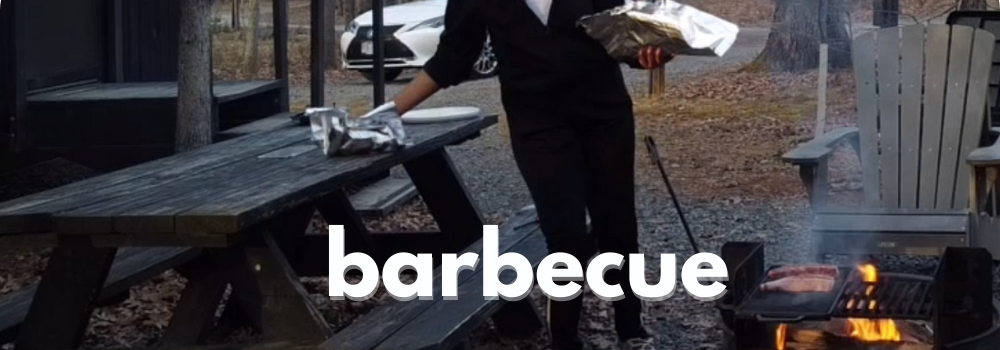
If you’re planning on hosting a barbecue, my advice is to make sure you have plenty of food
and drinks, and don’t forget about the little things that can make a big difference. Make sure
your Grill is clean and ready to go before the party starts, and consider marinating your meats
ahead of time to add flavor. Set up your Outdoor Furniture in a shady area to keep your guests
cool, and use Outdoor Lighting to create a cozy atmosphere as the night goes on. Make sure to
have enough Ice and drinks to keep everyone hydrated, and don’t forget to have a good time!
Barbecues are a great way to bring people together and enjoy good food and company.
Safety and Risk:
Barbecuing can be dangerous if proper safety measures aren’t taken. Make
sure the grill is in a well-ventilated area and away from any flammable materials. Keep a fire
extinguisher nearby and always supervise the grill when it’s in use.
Difficulty Level:
Barbecuing can be as simple or as complex as you want it to be. Grilling
burgers and hot dogs is easy, while smoking a brisket takes more skill and experience. Grill tools will make the job go a lot smoother.
Cost:
The cost of barbecuing can vary depending on what you’re cooking and how many
people you’re feeding. You’ll need to budget for the cost of food, Charcoal Or Propane, and any
accessories you might need.
Duration:
The amount of time it takes to barbecue depends on what you’re cooking. Burgers
and hot dogs can be cooked in just a few minutes, while a brisket can take up to 12 hours to
smoke.
Physical Requirements:
Barbecuing requires standing for extended periods of time and can be
physically demanding. Make sure you’re up for the task before you start cooking.
Equipment and Gear:
You’ll need a grill, charcoal or propane, Utensils for flipping and moving
food, and possibly a smoker if you plan on smoking meat. You might also want to invest in a
Meat Thermometer to ensure your food is cooked to a safe temperature. Having a nice cooler to keep drinks and food cold is good to have. Also depending on the time of year it can be great to a nice insect repellent.
Location:
Barbecuing is typically done outdoors, so make sure you have a suitable location.
You’ll need a flat, level surface for the grill and plenty of space for your guests to mingle.
Reviews and Recommendations: Do your research before you start barbecuing. Look for
recipes and tips from experienced grillers, and read reviews of different types of grills and
accessories.
Cultural Significance:
Barbecuing is an important part of many cultures and traditions, from
American barbecue to Korean barbecue. It’s a way to bring people together and enjoy good
food and company.
In conclusion, barbecuing can be a fun and rewarding activity, but it’s important to approach it
with caution and preparation. By following these guidelines and doing your research, you’ll be
well on your way to becoming a skilled grill master. Happy barbecuing!
What to wear?
It's generally a good idea to dress comfortably and in layers, as the weather can change quickly. Casual and practical attire such as shorts, t-shirts, and comfortable shoes are often appropriate. If the barbecue is taking place in a park, consider bringing a picnic blanket or folding chairs to sit on.
How to Get There?
In terms of getting there, if the barbecue is in someone's backyard, you may be able to walk or bike there. If it's in a park or public space, you may need to drive or take public transportation.
When should I?
When to have a barbecue can also depend on the host's schedule and preferences. Typically, barbecues are held during the warmer months, such as spring or summer, when it's more pleasant to be outdoors. They are often held on weekends or holidays when people have more free time. However, some hosts may choose to have a barbecue on a weekday evening or during the off-season.

Attending a dance class can be a fun and fulfilling experience, but it’s important to come
prepared with the right gear. As someone who has taken dance classes in various parts of the
world, I recommend investing in Comfortable Workout Clothes, Supportive Dance Shoes, and a
Water Bottle. A Dance Bag is also helpful to carry all your gear to and from the studio. Bringing
a Yoga Mat can provide extra cushioning during floor work, while Resistance Bands and a Foam Roller can help with stretching and recovery. For those practicing at home, a Portable Dance Floor can provide a smooth surface to practice on. Bringing a Bluetooth Speaker can add to the
ambiance and motivation during class, and a Dance Instructional DVD can be a great resource
for practicing at home. Overall, it’s important to prioritize comfort and safety when selecting
dance gear. With the right equipment, you can fully immerse yourself in the joy and cultural
significance of dance.
Safety and Risk:
Dance is a physical activity, so there is always a risk of injury. It is important to listen to your
body and not push yourself too hard. Make sure to warm up and stretch before class to
prevent injury. If you have any existing injuries or medical conditions, inform the instructor
before the class starts.
Difficulty Level:
Dance classes can vary in difficulty level, so it is important to choose a class that is appropriate
for your skill level. If you are a beginner, start with a basic class and work your way up.
Cost:
The cost of dance classes can vary depending on the location and instructor. Some classes
may require you to purchase a package or sign up for a membership. It is important to
consider the cost before committing to a class.
Duration:
Most dance classes typically last between 45 minutes to an hour. It is important to plan your
schedule accordingly and arrive on time to ensure you get the full experience.
Physical Requirements:
Dance requires physical exertion, so it is important to have a certain level of physical fitness.
However, there are classes available for all levels of fitness, so don’t let this deter you from
trying a dance class.
Equipment and Gear:
The required equipment and gear for a dance class can vary depending on the type of dance.
For example, ballet requires ballet shoes, while hip hop may only require comfortable clothing
and sneakers. Check with the instructor or studio to see what is required.
Location:
Dance classes can be held at various locations, such as dance studios, gyms, or community
centers. Choose a location that is convenient for you and fits your schedule.
Reviews and Recommendations:
Before attending a dance class, read reviews and ask for recommendations from friends or
family. This can give you an idea of what to expect and help you choose the right class for you.
Cultural Significance:
Dance is an important aspect of many cultures and can be a great way to learn about them.
Many dance classes offer cultural dances that can provide a deeper understanding of a
particular culture.
In conclusion, attending a dance class can be a fun and rewarding experience, but it is
important to consider the above factors before committing to a class. By choosing the right
class for your skill level, arriving on time, and being aware of safety precautions, you can have
a great dance experience. Don’t be afraid to try something new and enjoy the journey!
What to wear?
When attending a dance class, it's important to wear comfortable, form-fitting clothes that allow for ease of movement. Avoid wearing anything too loose or baggy that might get in the way or distract you while dancing. For footwear, you'll want to wear appropriate dance shoes, such as ballet slippers, jazz shoes, or tap shoes, depending on the type of dance you'll be learning. If you're not sure what to wear, it's always a good idea to check with the instructor or the dance studio for specific dress code guidelines.
When should I ?
Dance classes are offered throughout the year, so you can start at any time that suits your schedule. It's important to choose a class that matches your skill level, whether you're a beginner or more experienced dancer. If you're new to dance, look for beginner-level classes or classes specifically designed for adults who are just starting out. If you have prior dance experience, you may want to take an intermediate or advanced level class. Whatever your skill level, be sure to choose a class that is appropriate for your age and physical abilities.
How to Get There?
Finding a dance class is relatively easy these days, as there are many dance studios and community centers that offer classes for all skill levels. You can search online for dance classes in your area, or ask for recommendations from friends or family who may have taken dance classes before. Once you've found a class that interests you, check the schedule and make sure the class times and location are convenient for you. If transportation is an issue, consider carpooling with friends or using public transportation.

Visiting a brewery can be a fun and educational experience, but it’s important to come
prepared. Start by dressing comfortably, as you may be on your feet for several hours.
Consider wearing a Beer-themed Shirts Or Hats to show your love for the craft. When it comes to
gear, be sure to bring along a Bottle Openers, Growlers, and Koozies to make it easier to enjoy your
favorite beers at home. Beer Tasting Glasses and Flight Boards can help enhance your tasting
experience, and you can even purchase Brewery Tour Tickets to learn more about the
brewing process. If you’re interested in learning even more about beer, consider picking up a
Beer Books Or Guides to deepen your knowledge. Finally, be sure to either arrange for a
Uber Lyft Credits Or A Designated Driver to ensure a safe and enjoyable experience for
all. Cheers to a great brewery visit!
Safety and Risk:
When visiting a brewery, it’s important to drink responsibly. Don’t overdo it
and make sure you have a designated driver or plan on using a ride-sharing service. Be aware
of your surroundings and watch your step, as breweries can be busy and have slick floors.
Difficulty Level:
Visiting a brewery is generally a low-level physical activity, but you may need to
walk or stand for extended periods of time.
Cost:
The cost of visiting a brewery can vary depending on the location and what you choose
to do. Many breweries offer free tours, while others may charge a fee for tastings or special
events.
Duration:
You can typically spend as much time as you want at a brewery, but plan for at least
a couple of hours to fully experience everything they have to offer.
Physical Requirements: Most breweries are accessible for individuals with disabilities, but it’s
always a good idea to check with the brewery beforehand if you have any concerns.
Equipment and Gear:
There is no specific gear required for visiting a brewery, but comfortable
shoes and clothing are recommended. Some breweries may have outdoor areas, so dress
accordingly for the weather.
Location:
Breweries can be found all over the world, from small local establishments to large
commercial operations. Do some research beforehand to find a brewery that suits your
preferences and is convenient for you to visit.
Reviews and Recommendations:
Check out online reviews and recommendations from other
beer lovers to help you choose a brewery to visit. Social media can also be a great resource for
finding information and reviews.
Cultural Significance:
Visiting a brewery can provide insight into the history and culture of the
area you’re visiting. Many breweries incorporate local ingredients or traditions into their beers,
providing a unique and authentic experience.
Overall, visiting a brewery can be a great way to try new beers, learn about the brewing
process, and enjoy the company of friends and fellow beer enthusiasts. Just remember to drink
responsibly and have fun!
What to wear?
Comfortable clothing and shoes. Dress in layers, as some breweries may have indoor and outdoor seating. Avoid wearing strong perfumes or colognes, as it can affect the tasting experience
When should I ?
Check the brewery's hours of operation before visiting. Weekdays may be less crowded than weekends. Check if the brewery has any special events or promotions happening on specific days Enjoy your visit to the brewery and drink responsibly. Cheers!
How to Get There?
Check if the brewery is accessible by public transportation, or if you need to drive. If driving, have a designated driver or plan to use a ride-sharing service. Consider a brewery tour that includes transportation


When gearing up for an exciting session of axe throwing, having the right equipment is crucial for a safe and enjoyable experience. Start with a reliable set of Quality Throwing Axes, ensuring they are well-balanced and suitable for beginners or enthusiasts. Create a designated throwing area using Portable Target, which offers both convenience and safety. Equip yourself with Comfortable Closed-Toe Shoes, providing stability and protection during throws. Consider Safety Glove to enhance your grip and protect your hands. For tracking your progress and scoring accuracy, grab a Scorecard or Scoring App. Don’t forget to bring some Refreshing Beverages to stay hydrated and make your axe throwing experience even more enjoyable.
Safety First
Before diving into the thrill of axe throwing, prioritize safety. Familiarize yourself with the venue’s safety guidelines and always follow proper throwing techniques. Ensure the throwing area is clear of obstacles and bystanders, maintaining a safe distance at all times.
Technique and Practice
Perfecting your axe throwing technique takes practice. Start with the basics, focusing on your grip, stance, and release. Many venues offer guidance or coaching, so don’t hesitate to seek assistance. Regular practice not only improves accuracy but also enhances the overall enjoyment of this unique and engaging activity.
Friendly Competition
Axe throwing is often enjoyed as a social activity, making it perfect for friendly competitions. Challenge your friends to see who can hit the bullseye or achieve the highest score. Consider creating a mini-tournament with brackets and prizes to add an extra layer of excitement to your axe throwing experience.
Capture the Moments
Document your axe throwing adventure by bringing along a Smartphone Case. Share the fun with friends and family by capturing your best throws and the overall camaraderie of the experience.
Celebrate Responsibly
Whether it’s hitting the bullseye or simply enjoying the thrill of the throw, celebrate your successes responsibly. Many axe throwing venues have on-site amenities, so consider treating yourself and your group to some post-throwing refreshments.
In Conclusion
Axe throwing offers a unique blend of skill, competition, and camaraderie. By embracing safety, practicing your technique, and enjoying the social aspect, you’re sure to have an unforgettable time at the axe throwing venue. So, gear up, aim true, and let the axes fly!
What to wear?
Wear comfortable clothing and closed-toe shoes to ensure both safety and ease of movement. Avoid loose accessories that might interfere with your throws. Most venues have specific dress requirements, so check in advance and come prepared for a comfortable and enjoyable time.
How to Get There?
Axe throwing venues are typically located in urban areas or entertainment districts. Use reliable transportation services such as rideshares or public transit to reach the venue. Plan your route in advance to ensure a smooth journey to the axe throwing destination.
When should I?
Axe throwing is a versatile activity suitable for various occasions. Consider organizing a group outing for birthdays, team-building events, or casual gatherings with friends. Check the venue's operating hours and schedule your axe throwing adventure at a time that suits your group.


When venturing into a corn maze, anticipation fills the air as you navigate through twisting paths and towering stalks. Comfortable shoes providing traction are essential for traversing the uneven terrain, while a hat shields you from the sun’s rays above. Don’t forget to pack a picnic blanket for a cozy rest stop along the way, and keep pesky mosquitoes at bay with a mosquito repellent bracelet. A smartphone case keeps your device protected as you capture memories of the adventure, and a flashlight illuminates the path forward in the maze’s dim corridors. As you explore the maze’s intricate pathways, remember to stay hydrated and take breaks as needed to maintain your energy. Embrace the challenge of finding your way out and savor the adventure of exploring the maze’s twists and turns. So, lace up your shoes, grab your essentials, and embark on a memorable corn maze adventure!
Safety and Risk:
Exploring a corn maze entails inherent risks, so it’s crucial to prioritize safety measures. Stay together with your group, especially if children are present, and designate a meeting point in case anyone gets separated. Be cautious of uneven terrain and watch out for trip hazards like roots or rocks. Additionally, be mindful of any posted rules or guidelines provided by the maze operator.
Difficulty Level:
Corn mazes vary in complexity, from simple designs suitable for families with young children to intricate layouts designed to challenge even the most seasoned maze-goers. Before entering, consider the difficulty level of the maze and choose one that aligns with the abilities and preferences of your group.
Cost:
Admission fees for corn mazes typically vary based on factors such as the size and complexity of the maze, as well as any additional attractions or amenities offered on-site. Look for discounts or package deals, especially if you plan to visit multiple attractions at the same location.
Duration:
Plan for a leisurely stroll through the maze, but be prepared to spend anywhere from 30 minutes to an hour or more depending on the size and complexity of the maze. Keep in mind that navigation challenges and unexpected twists and turns may extend your visit.
Physical Requirements:
While corn mazes generally do not require strenuous physical exertion, be prepared for walking and standing for an extended period. Wear comfortable shoes suitable for walking on uneven terrain and dress appropriately for the weather, layering clothing as needed.
Equipment and Gear:
Essential items to bring to a corn maze include a flashlight for navigating dark corners or evening visits, as well as a small backpack to carry water, snacks, and any personal belongings. Consider bringing a map or compass to aid in navigation, especially in larger mazes.
Location:
Corn mazes are typically located in rural areas or on farms, offering a scenic backdrop for your maze adventure. Research nearby options and check for seasonal availability before planning your visit.
Reviews and Recommendations:
Before visiting a corn maze, read reviews from previous visitors to get insights into the maze’s design, atmosphere, and overall experience. Pay attention to any tips or recommendations provided by others to enhance your visit.
Cultural Significance:
Corn mazes have become a popular autumn tradition in many regions, offering families and friends an opportunity to enjoy seasonal fun together. Embrace the festive spirit and immerse yourself in the harvest season ambiance as you navigate through the maze’s twists and turns.
In conclusion, a visit to a corn maze promises a delightful and memorable experience for individuals and families alike. By following safety guidelines, choosing an appropriate maze, and preparing accordingly, you can enjoy a fun-filled adventure exploring the labyrinthine pathways of the cornfield.
What to wear?
Dress comfortably for your corn maze adventure, keeping in mind the outdoor setting and potential weather conditions. Opt for layers to accommodate temperature changes, and wear sturdy, closed-toe shoes suitable for walking on uneven terrain.
When should I ?
Embark on your corn maze adventure during the fall season, typically from September to October, when corn mazes are in full swing. This period offers the best conditions, with cooler temperatures, vibrant autumn foliage, and a festive atmosphere. Check the specific opening times of the corn maze venue and plan your visit accordingly to enjoy the seasonal charm.
How to Get There?
Research the location of the corn maze and plan your transportation accordingly. Utilize GPS or mapping apps for accurate directions, and consider carpooling with friends or family to enhance the overall experience. Check for any available parking facilities or designated drop-off points at the maze location.
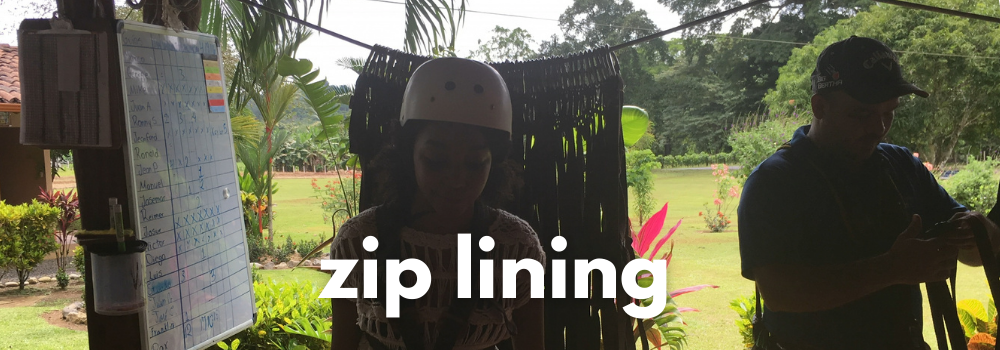

Embarking on a thrilling ziplining adventure requires the right gear to ensure both safety and enjoyment. Start with a sturdy ziplining harness that provides secure support throughout your experience. Pair it with comfortable athletic shoes for ease of movement and a firm grip on the ziplining platforms. Don’t forget to bring along Helmet to safeguard your head during the high-flying excitement. For capturing breathtaking moments, consider an action camera that can be securely attached to your gear. Lastly, equip yourself with a hydration pack to stay refreshed during your ziplining escapade.
Getting There
Research the location of your ziplining adventure and plan your transportation accordingly. Whether it’s a mountainous terrain or a lush forest canopy, understanding the journey to the ziplining site is key to a smooth and enjoyable experience.
When to Go
Ziplining is often weather-dependent, so choose the optimal time for your adventure. Consider going during [specific months] when the weather is mild and the scenic views are at their best. Be sure to check with the ziplining facility for any seasonal considerations.
What to Wear
Wear comfortable clothing suitable for the weather conditions at the ziplining site. Opt for lightweight, moisture-wicking fabrics for warm weather and layer up with insulating materials in cooler climates. Closed-toe shoes are a must for safety, providing stability and protection. Consider a pair of gloves and a fanny pack for your belongings too.
Safety Guidelines
Prioritize safety by familiarizing yourself with the ziplining facility’s guidelines. Listen carefully to the instructions provided by the guides, and adhere to all safety protocols. Understanding how to use your equipment properly ensures a secure and enjoyable ziplining experience.
The Ziplining Experience
As you soar through the air, take in the breathtaking views and relish the adrenaline rush of ziplining. Capture the experience with your action camera, and share the excitement with friends and family. Many ziplining venues offer different courses, so consider exploring various lines and challenges.
Post-Ziplining Celebration
After completing your ziplining adventure, take a moment to celebrate your accomplishment. Some ziplining locations may have on-site amenities, allowing you to relax and reflect on the exhilarating experience. Treat yourself to a post-ziplining meal or refreshments with your fellow adventurers.
In Conclusion
Ziplining is a remarkable adventure that combines the thrill of speed with awe-inspiring scenery. By being well-prepared, following safety guidelines, and embracing the excitement, you’re sure to create lasting memories on your ziplining escapade. So, gear up, take the leap, and enjoy the thrill of flying through the treetops!
What to wear
Start with a moisture-wicking base layer to keep you dry, especially if you're ziplining in warm weather. Pair it with comfortable and breathable athletic pants or shorts, allowing for ease of movement. Wear sturdy closed-toe shoes with a secure fit to provide stability on the ziplining platforms.
When should I?
Ziplining is often a year-round activity, but the ideal time may vary depending on your destination. Consider visiting during the spring or fall when the weather is pleasant, and nature is in full bloom or vibrant foliage.
How to Get There?
Research and choose a reputable ziplining venue in your desired location. Ensure easy access to the site and plan your transportation accordingly. Most ziplining parks provide detailed directions on their websites.


When it comes to enjoying a bonfire, having the right setup and gear can enhance your experience. A good Fire Pit creates a designated and safe area for your bonfire. Ensure a long-lasting and cozy fire by choosing high-quality Firewood. Make lighting the fire easy and efficient with Fire Starter. Set up a cozy seating area with a comfortable outdoor blanket. Enjoy a classic bonfire treat by roasting marshmallows with marshmallow roasting sticks. Add a magical ambiance to your bonfire area with String Light. Keep refreshments within reach with a drinks cooler. Enhance the atmosphere with some musical entertainment by bringing a guitar. Keep pesky bugs away with Bug Repellent. Maintain cleanliness by having an outdoor trash bin for easy disposal. With these items, you’ll be well-prepared for a fantastic bonfire night.
Safety and Risk:
Hosting a bonfire comes with inherent risks, so it’s crucial to prioritize safety measures. Choose a suitable location away from any flammable materials, such as dry grass or overhanging branches, and clear the area to create a safe zone around the fire. Always have a fire extinguisher or bucket of water nearby in case of emergencies, and never leave the fire unattended.
Difficulty Level:
While hosting a bonfire is relatively straightforward, there are still factors to consider to ensure a successful and enjoyable experience. Factors such as weather conditions and local regulations may influence the difficulty level of hosting a bonfire. Be prepared to adapt your plans accordingly.
Cost:
The cost of hosting a bonfire can vary depending on factors such as the location, the size of the fire, and any additional amenities or supplies you may need. Consider budgeting for firewood, fire starters, and any permits or fees required for hosting a fire in your chosen location.
Duration:
The duration of a bonfire can vary depending on factors such as the size of the fire and the availability of fuel. Plan for an evening of relaxation and socializing around the fire, but be prepared to monitor and maintain the fire as needed throughout the event.
Physical Requirements:
Hosting a bonfire typically does not require strenuous physical exertion, but be prepared to spend time standing or sitting near the fire. Ensure you have comfortable seating available for guests, and consider providing blankets or jackets to stay warm if the weather is cool.
Equipment and Gear:
Essential items for hosting a bonfire include firewood, matches or a lighter, and a suitable container or fire pit to contain the flames. Consider providing additional amenities such as seating, blankets, and snacks to enhance the comfort and enjoyment of your guests.
Location:
Choose a suitable location for hosting your bonfire, taking into account factors such as proximity to neighbors, local regulations, and availability of amenities such as restrooms and parking. Consider whether the location offers scenic views or natural surroundings to enhance the ambiance of the event.
Reviews and Recommendations:
Before hosting a bonfire, consider seeking advice and recommendations from experienced hosts or local authorities. Explore online resources and community forums to gain insights into best practices, safety guidelines, and potential challenges associated with hosting a fire.
Cultural Significance:
Bonfires have a long history of cultural significance, often serving as a focal point for community gatherings, celebrations, and rituals. Embrace the tradition and spirit of the bonfire by inviting friends and family to join in the festivities and create lasting memories together.
In conclusion, hosting a bonfire offers a wonderful opportunity to gather with loved ones and enjoy the warmth and camaraderie of a crackling fire. By prioritizing safety, planning carefully, and creating a welcoming atmosphere, you can ensure a memorable and enjoyable experience for all.
How to Set Up a Bonfire
Setting up a bonfire can add warmth and ambiance to your camping experience. Begin by selecting a suitable location away from flammable materials and following any local regulations. Clear the area of debris and create a fire pit with rocks or a designated fire ring.
When should I ?
Choose an appropriate time for your bonfire, typically during the evening when temperatures drop. Check the weather forecast to ensure calm conditions, avoiding windy days that can pose challenges to the fire. Sunset provides an ideal backdrop for a magical bonfire experience.
What to Bring
Pack essential items for a successful bonfire. Bring firewood, preferably dry and seasoned, along with newspaper or fire starters to ignite the flames. Consider a sturdy fire pit or a portable fire bowl for safety. Don't forget long-handled roasting sticks for marshmallows and hot dogs.
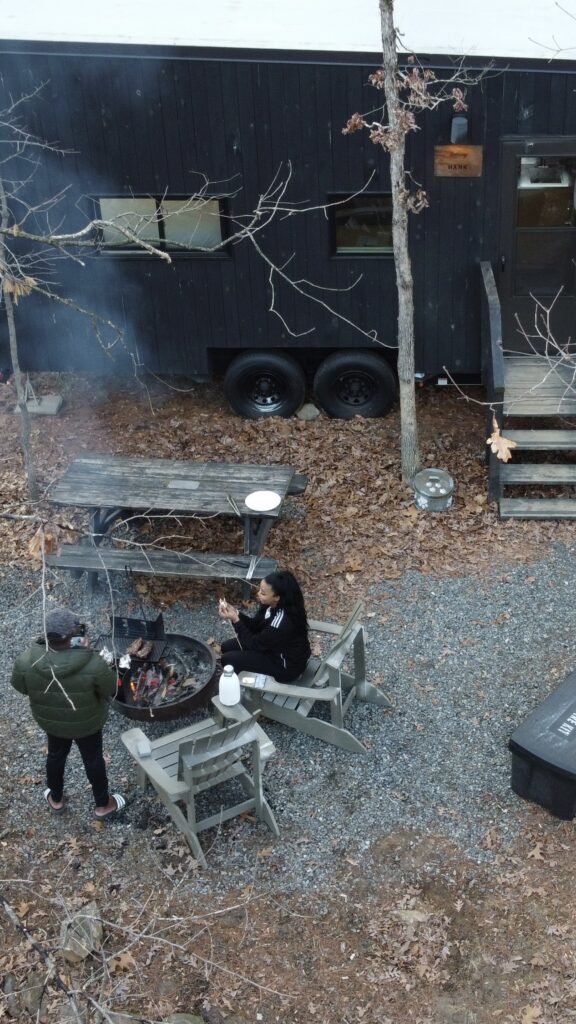

When it comes to playing tennis, having the right equipment is essential. First and foremost, you need a good Tennis Racquet that suits your playing style and level. Don’t forget to purchase Tennis Balls as well, as you can’t play without them. Tennis Shoes with good grip are also important for the safety and comfort of your feet while playing. It’s also crucial to invest in a Tennis Bag that can keep all of your equipment organized and protected during transportation. Tennis Grips, Tennis Strings, and Tennis Overgrips can help you personalize your racquet to your preferences and enhance your performance. You’ll also want to bring a tennis towel to wipe off sweat and a pair of Tennis Wristbands and a Tennis Headband to keep your sweat from affecting your grip on the racquet.
In addition to buying the right equipment, it’s important to practice good sportsmanship and etiquette when playing tennis. Always be respectful to your opponents and follow the rules of the game. Be sure to warm up properly before starting a match and stay hydrated throughout. Tennis is not only a great way to stay active and improve your physical health, but it’s also a great way to socialize and make new friends. So, grab your equipment, hit the court, and have fun!
Safety and Risk:
As with any physical activity, there is always a risk of injury when playing tennis. However, the overall risk of injury is relatively low compared to other sports. To reduce the risk of injury, it is important to wear proper tennis shoes with good support and traction, and to warm up properly before playing. It is also recommended to stretch after playing to prevent muscle soreness and tightness.
Difficulty Level:
Tennis can be a challenging sport, but it is also accessible to players of all skill levels. The sport requires a combination of physical and mental skills, including hand-eye coordination, speed, agility, and strategy. While mastering the sport can take years of practice, beginners can still have fun and get a good workout while learning the basics.
Cost:
The cost of playing tennis can vary depending on the location and facilities. Many public parks offer free or low-cost tennis courts, while private clubs may require membership fees or court rental fees. The cost of equipment and gear can also vary, with options ranging from budget-friendly to high-end.
Duration:
A typical tennis match can last anywhere from 30 minutes to several hours, depending on the format and skill level of the players. Tennis can also be played as a leisurely activity, with no set duration or structure.
Physical Requirements:
Tennis is a physically demanding sport that requires players to be in good shape. Players should have good cardiovascular endurance, as well as strength and flexibility in their arms, legs, and core. While players of all ages can enjoy tennis, it is recommended that beginners consult with a doctor before starting any new physical activity.
Equipment and Gear:
The basic equipment needed to play tennis includes a tennis racket, tennis balls, and appropriate footwear. Some players may also choose to wear protective gear, such as elbow or knee pads. Depending on the location and facilities, additional gear such as tennis nets and court markers may also be required.
Location:
Tennis can be played on a variety of surfaces, including clay, grass, and hard court. Many public parks and recreation areas offer tennis courts for free or low cost, while private clubs and facilities may have additional amenities such as locker rooms and professional coaching.
Reviews and Recommendations:
Many tennis players enjoy the social aspect of the sport, and joining a club or group can be a great way to meet new people and improve your game. It is also recommended to seek out reviews and recommendations when choosing a location or coach, as the quality of facilities and instruction can vary.
Cultural Significance:
Tennis has a rich history and cultural significance, with roots dating back to 12th century France. The sport has been played at the Olympic level since 1896, and has produced many iconic players such as Serena Williams and Roger Federer. Tennis is also known for its unique scoring system and traditions, such as the all-white dress code at Wimbledon.
In conclusion, tennis is a sport that can provide a fun and challenging workout for people of all ages and skill levels. Whether you are looking to join a competitive league or simply play for leisure, tennis can be a great way to improve your fitness and meet new people. By following basic safety precautions, choosing appropriate equipment, and seeking out quality instruction, you can enjoy all that tennis has to offer.
What to wear?
When playing tennis, it's important to wear comfortable, breathable clothing that allows for ease of movement. Men typically wear shorts and a polo or t-shirt, while women often wear tennis skirts or dresses. It's also recommended to wear tennis shoes with good traction to prevent slipping on the court.
When should I ?
Tennis can be played year-round, but the best time to play is typically during the spring and summer months when the weather is warmer and more predictable. It's also a popular activity during the fall when the leaves are changing and the weather is mild. In colder months, some players move indoors to play on heated courts. Ultimately, when you play tennis depends on your personal schedule and the availability of courts in your area.
How to Get There?
Getting to a tennis court can vary depending on where you are located. If you have a court nearby, you can simply walk, bike, or drive to it. If you don't have a court nearby, you may need to look into local tennis clubs or facilities that offer courts for use.

When attending a house party, it’s important to come prepared with some essential items.
Bringing a Portable Speaker and Party Lights can help create a fun and lively atmosphere.
Disposable Cups And Plates, as well as a Beverage Dispenser, can make it easy to enjoy drinks
and snacks without having to worry about washing dishes. A Bottle Openers and Ice Bucket are
also essential for serving cold beverages. Snack Bowls can be filled with chips or other snacks,
and Card Games can provide entertainment throughout the night. Finally, bringing a Disposable Camera and Breath Mints can help you capture memories and keep your breath fresh throughout the evening. By being prepared with these items, you can ensure a fun and memorable experience at your next house party. When attending or throwing a house party, it is important to remember to have fun, but also be aware of the potential safety risks. Make sure to have a plan in place for any unexpected situations, like a fire or injury. It’s also important to consider the noise level and potential disturbance to neighbors. Set clear boundaries and guidelines for guests to ensure everyone has a safe and enjoyable time. With these tips and items, your next house party is sure to be a
hit.
Safety and Risk:
Safety should be the top priority when hosting or attending a house party.
Make sure to have a plan for any potential emergencies, such as having a first-aid kit on hand
and designating a responsible person to monitor the event. Additionally, be aware of any
potential risks or hazards in the house and take steps to minimize them. When attending or
throwing a house party, it is important to remember to have fun, but also be aware of the
potential safety risks. Make sure to have a plan in place for any unexpected situations, like a
fire or injury. It’s also important to consider the noise level and potential disturbance to
neighbors. Set clear boundaries and guidelines for guests to ensure everyone has a safe and
enjoyable time. With these tips and items, your next house party is sure to be a hit.
Difficulty Level:
The difficulty level of a house party can vary depending on the theme and level
of organization involved. For a simple get-together, the difficulty level may be low, while a more
elaborate theme or larger guest list may require more planning and preparation.
Cost:
The cost of a house party can vary greatly depending on the food, drinks, decorations,
and other expenses involved. It’s important to set a budget beforehand and stick to it to avoid
overspending.
Duration:
The duration of a house party can vary depending on the occasion and the
preferences of the host and guests. Generally, a house party may last a few hours to an entire
evening.
Physical Requirements:
There are no strict physical requirements for attending or hosting a
house party, but it’s important to make sure the space is accessible and safe for all guests,
especially those with mobility issues.
Equipment and Gear:
Depending on the theme and activities involved, certain equipment and
gear may be necessary for a successful house party. This could include items like a sound
system for music or games, decorations, and cooking supplies.
Location:
The location of a house party is obviously at someone’s home, so it’s important to
ensure the space is large enough to accommodate the guest list and any planned activities.
Reviews and Recommendations: While there may not be formal reviews for a house party, it’s
important to consider the recommendations and feedback of others who have attended similar
events in the past. This can help ensure the party is enjoyable for all guests.
Cultural Significance:
House parties can be significant in certain cultures and communities as a
way to socialize and celebrate with friends and family. It’s important to be mindful of cultural
norms and traditions when hosting or attending a house party. In terms of what to wear and when to do it, the dress code for a house party can vary depending on the occasion and the preferences of the host and guests. Generally, casual attire is acceptable, but if there is a theme, guests should dress accordingly. As for when to have a house party, this can also vary depending on the occasion and availability of the host and
guests. Weekend evenings are often popular times for house parties, but daytime events can
also be enjoyable. In conclusion, house parties can be a fun and relaxed way to spend time with friends and
family. By keeping safety in mind, setting a budget, and considering the preferences of guests,
a successful house party can be enjoyed by all.
What to wear?
When it comes to what to wear to a house party, it really depends on the vibe of the party. If it's a casual gathering, you can get away with jeans and a t-shirt, but if it's a more formal event, you might want to dress up a bit more. The key is to strike a balance between looking stylish and feeling comfortable. Some safe options include a nice blouse or shirt paired with comfortable pants or a skirt, or a casual dress that can be dressed up or down.
How to Get There?
Getting to a house party will depend on the location of the party. If it's close to your home, you can walk or bike if the weather permits. If it's further away, you can take public transportation or drive if you have access to a car. Make sure to plan ahead and leave plenty of time to get there so you don't arrive too early or too late.
When should I ?
House parties can be thrown or attended any time of the year, but they're especially popular during the warmer months when outdoor spaces can be utilized. If you're thinking of throwing a house party, consider the season and the availability of outdoor space. If you're looking to attend a house party, keep an eye out for invitations from friends or consider hosting your own gathering. House parties are a great way to socialize with friends in a relaxed and comfortable environment. Just make sure to follow any house rules and be respectful of the host's property

Boating Adventure Essentials
Embarking on a boating adventure requires careful preparation to ensure a safe and enjoyable experience on the water. Begin with essential safety gear, including a Life Jacket for all passengers. Equip your boat with navigation lights to enhance visibility during low-light conditions. Don’t forget a marine first aid kit to address minor injuries or emergencies. For communication and navigation, consider waterproof marine GPS to keep you on course. Keep your belongings dry and secure with Waterproof Dry Bag designed for boating.
Getting There
Plan your route to the boating location and make arrangements for transportation. Ensure your vehicle is equipped with a suitable trailer for towing the boat. Check the local regulations and access points for launching your boat safely.
When to Go
Choose the ideal time for your boating adventure based on weather conditions and personal preferences. Boating is enjoyable during [specific seasons or months], providing the right balance of weather and water conditions. Be aware of any local events or restrictions that might impact your boating plans.
What to Wear
Dress appropriately for a day on the water. Wear lightweight, moisture-wicking clothing to stay comfortable, and consider a Sunglasses for sun protection. Footwear with non-slip soles is essential for safety on the boat.
Onboard Activities
Enhance your boating experience by bringing along fishing gear if you plan to fish, or snorkeling equipment for exploring underwater wonders. Pack a Portable Cooler with refreshing beverages and snacks to stay hydrated and energized during your time on the boat.
Navigating Waterways
Familiarize yourself with the local waterways, including any navigational markers, speed limits, and potential hazards. Use your marine GPS to follow your planned route and maintain situational awareness on the water.
Post-Boating Relaxation
After a day of boating, unwind and relax by comfortable outdoor chairs on the shore or at a marina. Share stories and memories with your fellow boaters, and enjoy the scenic views of the water at sunset.
Capturing Memories
Document your boating adventure by bringing along a Waterproof Phone Case. Capture the beauty of the water, the excitement of any water activities, and the camaraderie shared onboard.
In Conclusion
A day of boating promises a mix of excitement, relaxation, and connection with nature. By ensuring you have the right essentials, adhering to safety measures, and embracing the freedom of the open water, you’re bound for a memorable boating experience. So, set sail, explore new horizons, and let the waves be your guide!
What to wear?
When heading out for a boating adventure, it's essential to wear appropriate attire. Opt for lightweight, moisture-wicking clothing to stay comfortable. Don't forget a wide-brimmed hat, sunglasses, and sunscreen to protect yourself from the sun. If you're planning water activities, consider a swimsuit and quick-drying apparel.
How to Get There?
Ensure a smooth boating experience by planning your route in advance. Familiarize yourself with waterway maps and any navigational guidelines for the area. If you're using your boat, perform necessary maintenance checks before the trip. If renting, confirm the rental details and location, and consider arriving early for any safety briefings.
When should I ?
Choosing the right time for boating depends on various factors, including weather conditions and personal preferences. Early mornings and evenings often offer calmer waters and beautiful scenery. Check the weather forecast and plan your boating trip during a time that aligns with your desired experience.

What to Wear?
Dress casually for the weather and remember you are outdoors and there will be bugs.
How to Get There?
Use the map on your drone to see where you can fly and drive there. .
When Should I ?
When you travel.
Embarking on a drone piloting adventure is an exhilarating experience. Picture yourself soaring through the skies, capturing breathtaking aerial footage with the DJI Mavic Air 2 – 4K Drone. Essential gear becomes your trusted companions on this high-flying journey. As you navigate with precision using the Holy Stone HS720 GPS Drone, prioritize safety and control, just like a snowmobiler with their helmet and gloves. Prepare for your flight by checking weather conditions and airspace regulations, and don’t forget to immerse yourself fully in the drone piloting experience. So, power up your drones, launch into the sky, and let the aerial adventure unfold!
Safety and Risk:
Drone piloting entails inherent risks, so safety should be paramount. Always follow safety guidelines and regulations, including registering your drone with the appropriate authorities and flying in designated areas. Prioritize protective gear such as gloves and eye protection to ensure safe operation.
Difficulty Level:
The difficulty of drone piloting varies depending on factors like weather conditions, airspace regulations, and your level of experience. Start with simple maneuvers in open areas before advancing to more complex flights in challenging environments.
Cost:
Drone piloting costs fluctuate based on factors like the type of drone, accessories, and maintenance. Consider investing in quality equipment like the DJI Mavic Air 2 – 4K Drone or DJI Mini 3 Fly More Combo for reliable performance and features that suit your needs.
Duration:
A typical drone piloting session can last anywhere from 30 minutes to several hours, depending on battery life and flight objectives. Plan accordingly and bring extra batteries or a portable charger like the Anker PowerCore 26800 to extend your flight time.
Physical Requirements:
Drone piloting requires good hand-eye coordination, spatial awareness, and the ability to react quickly to changing conditions. Regular practice and training can improve your skills and confidence as a pilot.
Equipment and Gear:
Essential drone piloting gear includes a reliable drone like the Holy Stone HS720 GPS Drone or the DJI Tello Quadcopter Drone, along with spare batteries, a controller, and a smartphone or tablet for navigation. Ensure proper calibration and maintenance of your equipment for safe and efficient flights.
Location:
Drone piloting is possible in various locations, but always research and comply with local regulations and restrictions. Look for open spaces with minimal obstacles and interference to maximize safety and flight opportunities.
Reviews and Recommendations:
Explore reviews and recommendations from fellow drone pilots to learn about new techniques, accessories, and flight locations. Join online communities and forums to connect with enthusiasts and gain valuable insights.
Cultural Significance:
Drone piloting has gained popularity worldwide, with events and competitions celebrating innovation and creativity in aerial photography and videography. Embrace the community of drone enthusiasts and contribute to the advancement of this exciting hobby.
My Guide – Omar Linton
Drone piloting is operating a unmanned aerial vehicle using a remote control or computer based flight system to control its navigation, speed, altitude, and orientation. To become a drone pilot you have to determine your intention for operation. If you intend to use your drone for aerial photography and videography you may not need a certification. However if you intend to use your drone for surveying, inspection, delivery, or military operations you may need to undergo training and obtain certification from the appropriate aviation authority. In general typically smaller drones weighing less than 250 grams may be flown without a certification for recreational purposes in designated areas. Flying a drone without proper certification can result in fines, penalties, and eve criminal charges so make sure you check the regulations in your local area to determine what certification, if any, are required for flying.
Omar Linton recalls his first time flying a drone when he was in L.A. His friend had a DJI mini 2 that he flew thinking it was the “coolest experience ever”. His sister Kim ended up getting him a DJI mini SE for Christmas. He went for this option because it seemed like the best value for him as he wasn’t sure if he would enjoy drone piloting long term. Now he owns the SE and the DJI mini 2 because the mini 2 is faster and gives him a longer range better battery life 4K. Comparing the two the SE is great to start out for sure as its a great drone for starting out you won’t really notice the differences if you aren’t trying to fly drones professionally. To Omar the mini 3 is over kill none of the specs really speak out to him to upgrade right now as the mini 2currently meets all of his needs. Off-highway vehicles designed to travel spaces where you learn the process of which different
Some popular drone companies include DJI, PowerVison, and Yuneec which are Chinese companies. Parrot which is a French company,and Airobotics which is a Israeli company are also pretty popular.If you are looking for American based drone companies Autel Robotics, Kespry, PrecisionHawk, and Skydio are the most popular. When picking DJI to purchase his drone from Omar chose DJI without hesitation because it is a reputable brand that has backing from other high companies. Omar saw that DJI is sold on Apple’s website and that was enough to legitimize this company as top tier in their industry. The community DJI has played a large role in his decision as well. When searching for drone tips on forums you can find a lot of information on DJI drones giving him that assurance if he needed any help he would get support. Omar stated “I love the simplicity of DJI”.
Omar thinks its really exciting to fly something to get a better view and understanding of where you are you are able to see things from a new perspective when you are flying a drone. You can go places you cannot physically go as a human begin. To Omar it is just really eye opening and a cool opportunity to get to know the area a little more. When he travels he likes to bring his drone to get a view of where he is. If you have friends that have drones you can have racing competitions to push them to their limit. The concern Omar has when racing his mates is about losing signal. Other concerns Omar has about drone piloting include hitting a bird, or a tree, or a power cable. If you crash your drone with no plan they will replace your drone for a fee. He crashed his SE and bought a replacement. Omar recommends buying the protection plan for your drones as it will give you a peace of mind when flying which he has on his mini 2.
DJI forums are very helpfully and it builds a community. You can share your drone photos or crashes. When your drone crashes it automatically records a few seconds before and after the crash so that you can find your drone easily. When Omar crashed his SE it was completely preventable. His return to home setting was tree level (100 feet) instead of the maximum (394 feet). Personally Omar likes to physically navigate his drone to a safe landing but in this instance his friend clicked the return to home button and it ran directly into a tree. They were flying in a park in Woodbridge, Virginia. He was able to negotiate a discount on the repair price with the repair team at DJI. He also got lucky because he purchased his drone with his credit card and was able to get refunded.
Omar recommend that you are careful with your signal and keep battery life in mind when you are flying and make sure you are using proper desecration. Fly with you drone in site for a better peace of mind and avoid flying over cars. There is a map on the DJI app that allows you to see your drone so if it is for any reason out of sight you can use that to guide it back to you. Get the protection plan with your drone because it isn’t a matter of if you will crash your drone but when. Omar crashed his drone on 2 additional occasions to the poor mentioned. He crashed his drone in France on a balcony of a hotel, in the Shannondoah Mountains in Virginia.
Omar’s experience would be much better if the drone batteries lasted much longer and allowed for 2 hours of flight time. It is pretty annoying to have to land the drone and swap out the battery so frequently as the mini 2 only allows 31 mins of flight time in one session. Besides battery life he would prefer a more compact controller and affordability for additional accessories. Omar bough his drone from B&H photo who had a package deal. It came with a backpack, 128GB memory card, lens cleaner, landing pad, extra battery and other accessories. Be careful don’t try to fly a drone near you it can cut you. Omar loves taking photos of his drone images. He plans to have some images available for purchase soon.





What to Wear?
Business Casual Attire
How to Get There?
Driving is best as wineries are typically located in rural areas away from popular cities
When Should I Visit?
May, June, September
Escape the ordinary and immerse yourself in a delightful experience by visiting a winery. Discover the fascinating world of wine production as wineries provide an educational and immersive experience where visitors can witness the beauty of grape cultivation. The journey of wine tasting usually follows a simple process – swirl, see, smell, sip, savor, and select. One of the biggest benefits of visiting a winery is that it provides an opportunity to explore a wide range of flavors without having to commit to purchasing a bottle.
Exploring Wineries Near You:
To get started with exploring the world of wineries, all you need to do is search wineries near you. A fun challenge could be to visit all the wineries in your city first, and then gradually move on to the neighboring cities. Once you have familiarized yourself with the different types of wineries, attending massive events such as wine festivals and planning trips around wineries that are not local can be a great way to indulge in unique and unforgettable experiences. These events provide a wonderful opportunity to try new wines, enjoy music, and soak in the beautiful surroundings of vineyards.
Essential Accessories for Winery Visits:
If you want to make the most of your winery visit, consider bringing some essential accessories along. Wine tasting glasses and a wine aerator can help bring out the full flavor and aroma of each wine, while a wine chiller bucket or cooler can keep your wine at the perfect temperature. A wine decanter can also be a great addition to your winery experience, allowing the wine to breathe and reach its full potential. And don’t forget about the wine bottle opener and Wine Stoppers, which are essential tools for any wine lover. To complete the experience, a cheese board and knife set can provide the perfect accompaniment to your wine tasting, while a wine and food pairing guidebook can help you discover new and delicious combinations. With these accessories, you’ll be fully prepared to indulge in the unique and unforgettable experience of exploring the world of wineries.
Cost:
Visiting wineries can vary in cost depending on factors such as location
and the types of experiences offered. Be prepared to budget for
expenses related to wine tastings, tours, and purchases.
Reviews and Recommendations:
Explore reviews and recommendations from industry professionals, wine critics, and consumers to gain insights into successful wineries, vineyard practices, and wine quality. Networking with other winemakers and attending industry events can also provide valuable knowledge and support.
Cultural Significance:
Winemaking has a rich cultural heritage and holds significance in many regions, with traditions, festivals, and celebrations centered around wine. Embrace the cultural aspects of winemaking, connect with fellow enthusiasts, and contribute to the preservation and advancement of wine culture.
My Guide – Kenya
For Kenya, her first experience at a winery was an eye-opening event. She was introduced to the fascinating world of wine by her dad, who was a member of a wine club. It was here that she discovered her preference for white wines and her
distaste for the classic red wines. Kenya’s quest to find the perfect sweet red led her on a journey of exploration that took her to the Wine In The Woods festival in Columbia, Maryland. It was here that she discovered her ideal sweet red wine, and since then, she has become a connoisseur of the sweetest red wines from different brands.
In conclusion, wineries are a great way to broaden your palate and learn about the fascinating process of wine production. They offer a unique and exciting way to indulge in new experiences, and attending events like wine festivals can be a great way to discover new and exciting flavors. So, grab a friend, plan a trip to a winery, and explore the delicious world of wines.
INTERNATIONAL DESTINATIONS


April 2023
First Time Visited
Dubai
Cities Visited
2
Times Visited
Nov-April
When should I visit?
Etisalat & Du
Get a prepaid sim with a valid passport to register phone connection. Sim card phone needs to be unlocked and you can get your sim card from the airport, service provider stores, or authorized resellers.
7 days
How many days should I spend?
Souvenirs
name plate necklace in arabic, custom purfume oil , burj khalifa snow globe, white honey all natural
If you are planning a trip to Dubai, one thing I’d recommend is getting a travel scarf It’s lightweight and breathable, and you can use it to cover your head and neck from the sun. When heading to Dubai, pack smart: bring a universal travel adapter, a currency calculator for easy budgeting, a sunglass case carrier for protection, and a light jacket for cooler evenings. Water shoes are also a must-have, especially if you plan on doing any water activities like visiting the beach or going to a waterpark. They are slip-resistant and can protect your feet from hot sand or rough rocks. Lastly, a hydration pack is essential to keep you hydrated throughout the day. You can fill it up with water or any other beverage of your choice and carry it around with you without worrying about constantly stopping to buy bottled water. These items have saved me on my trips to Dubai, and I hope they’ll do the same for you.
Visa and Passport:
Visitors to the UAE need a valid passport and a visa to enter the country, unless you are a citizen of a visa-exempt country. You can check the UAE’s visa requirements online or contact the nearest UAE embassy or consulate.
Safety and Security:
The UAE is considered a safe country to visit, with low levels of crime and a strong police presence. Visitors should still exercise common sense and take necessary precautions to ensure their safety, such as avoiding isolated areas and not leaving valuables unattended.
Language and Culture:
The official language of the UAE is Arabic, but English is widely spoken and understood. The country’s culture is heavily influenced by Islamic traditions and values, and visitors should be respectful of local customs and dress modestly in public places.
Climate and Weather:
The UAE has a desert climate, with hot summers and mild winters. Temperatures can reach up to 50°C (122°F) during the summer months, so it’s important to stay hydrated and wear sunscreen if you’re visiting during this time.
Local Transportation:
The UAE, has an efficient public transportation system, including buses, KAREEM (uber), taxis, and a metro system in Dubai and Abu Dhabi. Rental cars are also available for those who prefer to drive themselves.
Currency Exchange:
The official currency of the UAE is the Emirati Dirham (AED). Currency exchange is widely available, and many shops and restaurants also accept major credit cards.
Accommodation:
There are a variety of accommodation options in the UAE, ranging from budget hostels to luxury hotels and resorts. Dubai is known for its iconic skyscraper hotels, while Abu Dhabi has a number of luxury beachfront resorts.
Local Cuisine in Dubai:
The UAE’s cuisine is a mix of traditional Middle Eastern dishes and international flavors. Some popular dishes to try include shawarma, falafel, and hummus. The country also has a vibrant coffee culture, with many cafes serving traditional Arabic coffee.
Top Attractions and Activities:
The UAE is home to some of the world’s most iconic attractions, such as the Burj Khalifa in Dubai, the Sheikh Zayed Grand Mosque in Abu Dhabi, and the Dubai Mall. Other popular activities include desert safaris, water sports, and theme parks.
Health and Medical Services:
The UAE has a modern healthcare system, with hospitals and clinics located throughout the country. Visitors should have comprehensive travel health insurance and take necessary precautions such as getting required vaccinations before traveling.
Unique Destinations:
Venture beyond Dubai’s skyline to explore Al Fahidi Historical Neighborhood, Alserkal Avenue’s cultural hub, and the serenity of Dubai Desert Conservation Reserve. Each offers a unique perspective on Dubai’s history, modernity, and natural beauty.
Where We Have Visited:
Discover Dubai’s landmarks, from the luxury of Dubai Marina to the charm of Deira’s souks and the architectural marvels of Downtown Dubai. Each area reflects Dubai’s blend of tradition and innovation.
Historical Significance:
Uncover Dubai’s history at Al Bastakiya, Al Fahidi Fort, and Hatta’s heritage village, showcasing Emirati culture amidst modern development.
Wildlife and Nature:
Experience Dubai’s natural landscapes through dune bashing, kayaking in mangroves, and snorkeling in the Arabian Gulf, while encountering wildlife at Ras Al Khor Wildlife Sanctuary.
Cultural Experiences:
Immerse in Dubai’s culture at festivals like Dubai Shopping Festival, savor Emirati cuisine, and explore traditions at the Sheikh Mohammed Centre for Cultural Understanding. Dubai offers a blend of heritage and modernity in its cultural offerings.
GUIDE— MYENNOHWEH, MIATA, GEORGIE
Embarking on a journey to Dubai unfolded into an opulent escapade, where every moment sparkled with luxury and adventure. The flight from London afforded panoramic views of the Arabian desert, hinting at the lavish experiences awaiting us. Upon touchdown, Dubai greeted us with a skyline adorned with towering skyscrapers and futuristic architecture, a testament to its modernity and ambition. We immersed ourselves in the bustling energy of the Dubai Mall, indulging in world-class shopping and marveling at the spectacle of the Dubai Fountain’s synchronized water dance. Venturing into the heart of the desert, we embarked on a thrilling desert safari, navigating towering dunes and witnessing a mesmerizing sunset over the endless sandscape. Evenings were a symphony of culinary delights, from savoring traditional Emirati cuisine in authentic Bedouin tents to dining at Michelin-starred restaurants overlooking the glittering cityscape. Exploring beyond the city limits, we marveled at the man-made wonders of the Palm Jumeirah and the iconic Burj Khalifa, standing as a testament to Dubai’s ambition and innovation. Each moment in Dubai was an extravagant celebration of luxury and indulgence, leaving us enchanted by the city’s boundless charm and allure. Just a word of advice: embrace the extravagance of Dubai’s lifestyle, but also take a moment to immerse yourself in its rich cultural heritage and traditions for a truly enriching experience.


September 2022
First Time Visited
France
Cities Visited
5
Times Visited
April-June
When should I visit?
Orange France
Embark on your French adventures with ease using Orange France's prepaid phone plan for travelers. Enjoy seamless connectivity without contracts or commitments, with competitive rates for local and international calls, plus data usage. Stay connected effortlessly while exploring France's vibrant streets and scenic landscapes. Bon voyage with Orange France's convenient prepaid plan!
7 days
How many days should I spend?
Souvenirs
Discover Parisian boutiques offering quintessential French souvenirs, from delicate macarons to artisanal cheeses. Explore Montmartre for unique artworks and vintage treasures, or wander Provence's markets for lavender-scented delights and vibrant ceramics. Each souvenir brings a piece of France's timeless charm back home with you.
Embarking on a journey to France, I packed essentials for every adventurer. Sunscreen shielded me under the French sun, while an anti-theft backpack kept my belongings secure amidst bustling streets. Mosquito repellent bracelets kept pesky bugs at bay during serene evenings. A solar-powered device charger ensured connectivity while traversing picturesque landscapes. With a compact travel first aid kit in hand, I felt prepared for any mishap. Universal adapters powered up my devices, while a portable hammock offered respite under the shade of towering trees. A portable travel lock safeguarded my accommodations, granting peace of mind. Lastly, a portable Wi-Fi hotspot kept me connected to the digital world amidst France’s timeless beauty.
Visa and passport:
Depending on your country of origin, you may need a visa to enter France. You’ll also need a valid passport that will remain valid for at least six months after your planned departure from France.
Safety and security:
France is generally a safe country, but travelers should be aware of the risk of pickpocketing and other petty crimes, particularly in crowded tourist areas.
Language and culture:
French is the official language of France, but many people also speak English. French culture is known for its appreciation of art, fashion, and cuisine.
Climate and weather:
France has a varied climate, with the north experiencing cool, rainy weather and the south
having a Mediterranean climate with hot summers and mild winters. The best time to visit
depends on the region and your personal preferences.
Local transportation:
France has an extensive public transportation system that includes buses, trains, and metros.
Taxis and rental cars are also available.
Currency exchange:
France uses the euro as its currency, and currency exchange services are widely available.
Accommodation:
France has a range of accommodation options, including hotels, hostels, and vacation rentals.
Prices can vary widely depending on the location and the time of year.
Local cuisine in France:
French cuisine is world-renowned, with specialties including cheese, wine, and pastries. Be sure to try some of the local specialties during your visit.
Top attractions and activities:
France is home to many popular tourist destinations, including the Eiffel Tower in Paris, the beaches of Nice, and the historic city of Cannes. Other popular activities include visiting museums, exploring castles and chateaux, and enjoying the local cuisine and wine.
Health and medical services:
France has a high standard of healthcare, with both public and private options available. Travelers should ensure they have adequate travel insurance to cover any medical emergencies.
Unique Destinations:
Venture beyond the bustling streets of Paris to explore unique destinations that unveil France’s diverse offerings. Discover the picturesque beauty of the lavender fields in Provence, the charming villages of Alsace, and the rugged cliffs of the Normandy coastline. Each locale offers a distinct glimpse into France’s rich landscapes and cultural heritage.
Where We Have Visited:
Embark on a journey through France’s iconic landmarks and hidden gems. Explore the enchanting streets of Paris, the vineyards of Bordeaux, and the fairytale castles of the Loire Valley. Each region showcases France’s natural beauty, cultural diversity, and historical significance.
Historical Significance:
Uncover France’s rich history at sites like the Palace of Versailles, where opulence and grandeur reflect the country’s royal legacy. Explore the ancient Roman ruins in Provence, and delve into the art and history of the Louvre Museum in Paris. France’s history is a tapestry of royal dynasties, revolutions, and artistic revolutions, reflected in its diverse array of historical sites and museums.
Wildlife and Nature:
Experience France’s stunning natural landscapes through activities like hiking in the Pyrenees, birdwatching in the Camargue, and skiing in the French Alps. Encounter diverse wildlife, from chamois to flamingos, in their natural habitats. France’s commitment to conservation ensures that visitors can explore its natural wonders while preserving its ecological heritage.
Cultural Experiences:
Immerse yourself in France’s vibrant culture by attending festivals like the Cannes Film Festival, savoring traditional French cuisine at local bistros, and exploring artistic masterpieces at museums like the Musée d’Orsay. Discover the elegance of French fashion, the romance of French literature, and the passion of French wine. From classical concerts in Paris to street performances in Avignon, France offers a wealth of cultural experiences that celebrate its heritage and creativity.

June 2013
First Time Visited
Cities Visited
Robertsport
Marshall
Monrovia
5
Times Visited
Nov-April
When should I visit?
Orange, Lonestar
Get a prepaid sim with a valid passport to register phone connection. Sim card phone needs to be unlocked and compatible with GSM 900 frequency in Liberia
7 days
How many days should I spend?
Souvenirs
woven baskets, wood carvings, beaded jewelry, coffee, cocoa products, lapa cloth, djembe drum or a kora, Liberian rum, Liberian flag or map, Liberian mask
Liberia, located on the west coast of Africa, is a beautiful and culturally rich country that offers a unique travel experience. The country has recently been emerging as a tourist destination, with its white sandy beaches, lush rainforests, and friendly locals. If you’re planning a trip to Liberia, here’s a comprehensive guide that covers everything you need to know.
If you’re planning a trip to Liberia, I highly recommend bringing along some essentials to make your experience as comfortable and safe as possible. One thing you definitely don’t want to forget is sunscreen – the sun can be pretty intense in Liberia! Also, be sure to pack some mosquito repellent to protect yourself against malaria and other mosquito-borne illnesses. And since access to electricity can be spotty in some areas, a solar-powered device charger and portable wifi will definitely come in handy. I also suggest bringing along a portable travel lock and anti-theft wallet to keep your belongings secure. And for any unexpected bumps and bruises, a travel first aid kit is always a good idea. Finally, when you’re ready to kick back and relax, a lightweight hammock is the perfect way to take in the beautiful scenery. All of these items can be easily found on Amazon and other online retailers, and they’ll definitely enhance your Liberian adventure!
Visa and Passport:
All foreign nationals, except those from the Economic Community of West African States (ECOWAS), need a visa to enter Liberia. You must have a passport that is valid for at least six months from the date of entry, and it must have at least two blank pages for immigration stamps. You can obtain a visa at a Liberian embassy or consulate or apply for an e-visa online before your trip.
Safey and Security:
While Liberia has made significant progress in recent years, it’s still recovering from years of civil war and Ebola outbreaks. Travelers should take precautions to stay safe, such as avoiding public demonstrations and staying aware of their surroundings. It’s also important to be aware of pickpocketing and other petty crimes. It’s best to check the latest travel advisories and follow the advice of your government.
Language and Culture:
The official language of Liberia is English, although many locals speak Kreyol, a local dialect. Liberia has a rich culture with a mix of indigenous and American influences. The country is known for its music, dance, and traditional clothing. Liberians are known for their hospitality and friendliness, and visitors are welcomed with open arms.
Climate and Weather:
Liberia has a tropical climate with high humidity and rainfall throughout the year. The best time to visit is during the dry season, which runs from December to April. Temperatures are usually around 25-30°C (77-86°F) year-round, but can drop at night. Be prepared for rain and bring appropriate clothing and footwear.
Local Transportation:
Local transportation options in Liberia include taxis, buses, and shared taxis called “kekes”. The roads can be rough, so it’s best to use a reputable taxi service or rent a car with a driver. Air travel is also an option, with regular flights between the capital, Monrovia, and other major cities.
Currency Exchange:
The currency used in Liberia is the Liberian dollar (LRD). US dollars are also widely accepted, especially for larger purchases. It’s best to exchange currency at banks or official exchange offices, as exchanging on the black market can be risky.
Accommodation:
Liberia has a range of accommodation options, from budget guesthouses to luxury hotels. Many hotels are located in Monrovia, but there are also options in other major cities and tourist destinations. It’s best to book accommodation in advance, especially during the peak tourist season.
Local Cuisine in Liberia:
Liberian cuisine is influenced by American, Caribbean, and indigenous African cultures. The country is known for its delicious seafood, such as barracuda and lobster, as well as rice-based dishes like jollof rice and fufu. Other popular dishes include cassava leaves, palm butter soup, and pepper soup.
Top Attractions and Activities:
Liberia has a variety of attractions for travelers to enjoy. The beautiful beaches of Robertsport, Buchanan, and Monrovia are popular for swimming, surfing, and relaxation. The Sapo National Park offers opportunities for wildlife viewing and hiking. The Liberian National Museum and Kendeja National Cultural Center offer insights into Liberian history and culture.
Health and Medical Services:
It’s important to take precautions to stay healthy while traveling in Liberia. Travelers should drink only bottled or filtered water and avoid street food. It’s also recommended to get vaccinations before traveling. It’s also recommended to get vaccinations before traveling, including for yellow fever, hepatitis A and B, typhoid, and meningitis. It’s important to bring a supply of any necessary prescription medications and to have comprehensive travel health insurance that covers medical treatment and emergency evacuation.
In terms of medical services, there are hospitals and clinics in Monrovia and other major cities that offer basic medical care. However, the quality of healthcare may not be up to Western standards. In case of a medical emergency, it’s recommended to seek treatment at one of the private hospitals in Monrovia. It’s also important to have a contingency plan and know the location of your country’s embassy or consulate in case of emergency.
Unique Destinations:
Explore Liberia’s diverse offerings beyond urban centers. Discover Nosara’s beaches, Monteverde’s rainforests, and Rincon de la Vieja’s rugged beauty.
Where We Have Visited:
Experience Liberia’s landmarks like Liberia City, Granada, and Tamarindo, each showcasing natural wonders, cultural diversity, and historical significance.
Historical Significance:
Uncover Liberia’s history at sites like the Guanacaste Museum and Guayabo National Monument, reflecting Indigenous culture, Spanish colonization, and modern development.
Wildlife and Nature:
Encounter Liberia’s diverse wildlife through activities like hiking in national parks, birdwatching in Palo Verde, and snorkeling in the Pacific coast’s clear waters.
Cultural Experiences:
Immerse in Liberia’s culture at festivals like Fiestas Civicas de Liberia, indulge in Costa Rican cuisine, and explore Indigenous art at markets. Liberia offers a blend of tradition and modernity in its cultural offerings.
Overall, Liberia is a fascinating and welcoming country that offers a unique travel experience. By being prepared and taking necessary precautions, travelers can enjoy all that Liberia has to offer while staying safe and healthy.


March 2016
First Time Visited
Playa Herradura
Cities Visited
2
Times Visited
Dec-April
When should I visit?
Claro and Kolbi
Get a prepaid sim with a valid passport to register phone connection at airport or any phone store.
7 days
How many days should I spend?
Souvenirs
anything that says pura vida, coffee, chocolate, handicrafts. handmade pottery, wooden carvings, and woven textiles
Citizens from most countries, including the United States, do
not require a visa to enter Costa Rica. A valid passport with at least six months remaining
before expiration is required.
Safety and Security:
Costa Rica is a relatively safe country, but like anywhere else, it is
important to exercise caution and be aware of your surroundings. Avoid carrying valuables
around and keep an eye on your belongings, especially in crowded tourist areas.
Language and Culture:
The official language of Costa Rica is Spanish. While many locals speak
English, it is always helpful to know some basic Spanish phrases. The culture of Costa Rica is
heavily influenced by Spanish colonialism, as well as indigenous and African cultures.
Climate and Weather: Costa Rica has a tropical climate, with two distinct seasons: the dry
season (December-April) and the rainy season (May-November). Temperatures remain warm
throughout the year, ranging from the mid-70s to the mid-80s.
Local Transportation:
Transportation options in Costa Rica include buses, taxis, rental cars, and
domestic flights. Public buses are the most affordable option, but they can be crowded and
uncomfortable. Taxis are readily available, but it is important to negotiate the fare before getting
in. Rental cars offer the most flexibility, but they can be expensive and driving in Costa Rica
can be challenging.
Currency Exchange:
The currency in Costa Rica is the colón (CRC), but US dollars are widely
accepted in tourist areas. It is recommended to exchange currency at banks or official
exchange bureaus, as airport and hotel exchanges can charge higher fees.
Accommodation: Accommodation options in Costa Rica range from budget-friendly hostels to
luxurious resorts. Popular options include eco-lodges and vacation rentals, which offer a more
authentic experience.
Local Cuisine:
Costa Rican cuisine is simple and delicious, with an emphasis on fresh
ingredients and traditional dishes such as gallo pinto (rice and beans), ceviche (marinated raw
fish), and casado (a typical lunch dish with rice, beans, salad, and a choice of protein).
Top Attractions and Activities: Costa Rica is known for its incredible natural beauty and outdoor
adventures. Some top attractions include Manuel Antonio National Park, Arenal Volcano,
Monteverde Cloud Forest Reserve, and Tortuguero National Park. Outdoor activities include
ziplining, white water rafting, surfing, and hiking.
Health and Medical Services:
Visitors to Costa Rica are advised to have travel insurance that
covers medical expenses. Medical facilities in Costa Rica are generally good, but it is
recommended to bring any necessary prescription medications from home. It is also important
to take necessary precautions against mosquito-borne illnesses, such as dengue fever and
Zika virus.

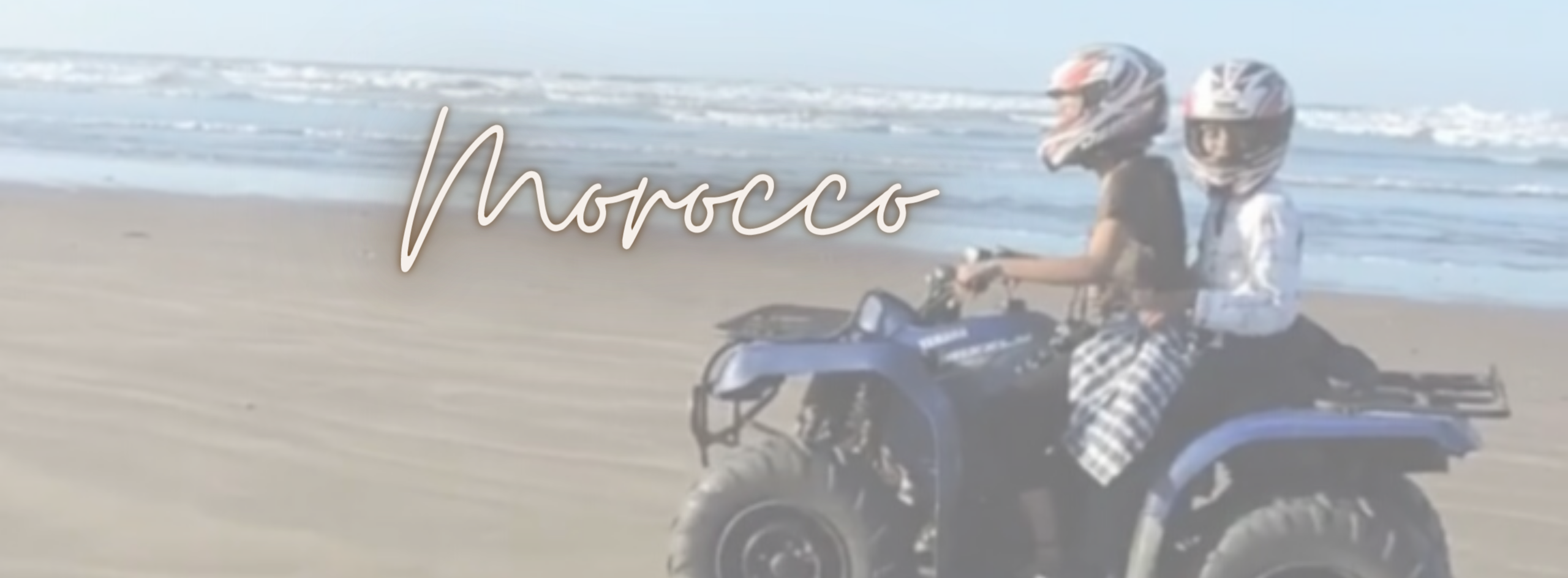
December 2013
First Time Visited
Cities Visited
Cassablanca
2
Times Visited
Mar-May
When should I visit?
Maroc Telecom
Travelers in Morocco have several phone carrier options like Maroc Telecom, Orange, and Inwi, offering prepaid SIM cards with affordable data and call packages. These carriers ensure seamless communication for exploring cities like Marrakech or Fez.
7 days
How many days should I spend?
Souvenirs
Morocco's bustling souks brim with unique souvenirs, from vibrant carpets to fragrant spices. Bargain with local artisans over mint tea for treasures like handcrafted leather goods or intricate silver jewelry. Each souvenir carries a piece of Morocco's rich cultural heritage, making it more than just a memento—it's a piece of your journey to take home.
Embarking on a journey to Morocco, I ensured I had all the essentials for a seamless and enjoyable adventure. A reliable travel adapter and voltage converter ensured my electronics stayed charged throughout my travels. Safeguarding my valuables, an RFID blocking travel wallet provided peace of mind amidst bustling markets and crowded streets. Organizing my belongings efficiently, travel packing cubes kept my luggage neat and compact. Shielding myself from the scorching sun, a sun hat with a neck flap offered essential protection during outdoor excursions. Keeping my phone safe and dry, a universal waterproof phone case allowed me to capture every moment, even in unpredictable weather conditions. Prepared for any mishap, a compact travel first aid kit ensured I had the essentials for minor emergencies. With these essentials in tow, I embarked on my Moroccan adventure, ready to explore its vibrant souks, enchanting medinas, and breathtaking landscapes with confidence and ease.
Visa and Passport:
Travelers to Morocco must ensure they have a valid passport and may require a visa depending on their nationality. It’s essential to check visa requirements well in advance of your trip and ensure your passport has at least six months’ validity beyond your planned departure date.
Safety and Security:
Morocco is generally safe for tourists, but it’s wise to exercise caution and be aware of your surroundings, especially in crowded areas and tourist spots. Stay informed about any travel advisories and adhere to local laws and customs to ensure a trouble-free visit.
Language and Culture:
Arabic and Berber are the official languages of Morocco, with French widely spoken in tourist areas. Embrace the rich cultural heritage shaped by Arab, Berber, and European influences, and respect local customs and traditions during your stay.
Climate and Weather:
Morocco boasts diverse climates, from the Mediterranean coast to the Sahara Desert. The best time to visit depends on your preferences and the regions you plan to explore. Summers can be hot, while winters are milder but may bring chilly evenings, especially in the desert. Be sure to pack accordingly for the weather conditions.
Local Transportation:
Morocco offers various transportation options, including trains, buses, and taxis. Public transportation is well-developed in major cities like Marrakech and Casablanca, while rental cars are convenient for exploring rural areas. Domestic flights are also available for longer distances between cities.
Currency Exchange:
The official currency of Morocco is the Moroccan Dirham (MAD). Currency exchange services are readily available at banks, exchange offices, and hotels. Credit cards are accepted in most tourist establishments, but it’s advisable to carry some cash for smaller purchases and markets.
Accommodation:
From riads in the medinas to luxury resorts along the coast, Morocco offers a wide range of accommodation options to suit every budget and preference. It’s recommended to book accommodation in advance, especially during peak tourist seasons, to secure your preferred choice.
Local Cuisine in Morocco:
Indulge in the diverse flavors of Moroccan cuisine, characterized by aromatic spices, tagines, couscous, and mint tea. Don’t miss the opportunity to sample street food delicacies like pastilla and harira soup, or savor a traditional Moroccan feast in a local restaurant.
Top Attractions and Activities:
Explore Morocco’s enchanting attractions, from the vibrant souks of Marrakech to the ancient medina of Fez. Discover the majestic beauty of the Atlas Mountains, the serene tranquility of the Sahara Desert, and the coastal charm of Essaouira. Engage in cultural experiences like camel trekking, haggling in the markets, and visiting historic landmarks such as the Hassan II Mosque.
Health and Medical Services:
Morocco has a reasonably well-developed healthcare system, with hospitals and clinics available in major cities. However, it’s advisable to have travel insurance that covers medical expenses, as treatment can be expensive for non-residents. Be sure to pack any necessary medications and take precautions to stay healthy during your trip.
Unique Destinations:
Venture beyond the well-known tourist spots to explore Morocco’s unique destinations, such as the blue-washed town of Chefchaouen, the ancient Roman ruins of Volubilis, and the picturesque coastal town of Asilah. Each offers a distinctive glimpse into Morocco’s rich history, culture, and natural beauty.
Where We Have Visited:
The city of Marrakech is one of the most popular destinations in Morocco, known for its vibrant markets, colorful gardens, and stunning architecture. The Majorelle Garden, a botanical garden created by French artist Jacques Majorelle, is a must-visit destination in Marrakech. The garden is home to over 300 plant species, as well as a collection of Islamic art and Berber artifacts.
Historical Significance:
Explore Morocco’s rich historical tapestry through iconic sites like Fez, Marrakech, and Essaouira, each revealing the country’s diverse cultural influences. From ancient Roman ruins to intricate Kasbahs, Morocco’s history is a captivating blend of ancient traditions and modern influences, shaping its unique identity.
Wildlife and Nature:
Morocco is known for its agriculture, with olives, citrus fruits, and grains being some of the country’s main crops. Moroccan cuisine is also renowned around the world, with dishes like couscous, tagine, and harira being popular favorites. Moroccan food is a fusion of Mediterranean, Middle Eastern, and African influences, and is often accompanied by a cup of sweet mint tea. Morocco’s location at the crossroads of Africa, Europe, and the Middle East has also made it a popular destination for travelers. From the blue-washed city of Chefchaouen to the breathtaking Sahara Desert, Morocco is a country of diverse and awe-inspiring landscapes.
Cultural Experiences:
One of the highlights of traveling to Morocco is experiencing the country’s rich culture. Morocco has a fascinating history that is reflected in its architecture, art, and traditions. From the ornate mosques of Casablanca to the bustling souks of Marrakech, Morocco is a country that exudes history and culture.
Another popular destination in Morocco is the coastal city of Essaouira, a UNESCO World Heritage Site known for its picturesque harbor, sandy beaches, and vibrant music scene. Visitors can stroll through the city’s historic medina, sample fresh seafood at the local restaurants, or take a camel ride along the beach.
My Guide – Fatima
But perhaps the best way to experience Morocco is through the eyes of a local. We recently spoke with Fatima, a Moroccan native who has traveled extensively throughout the country. She shared her experiences with us, from exploring the kasbahs of the Atlas Mountains to savoring traditional tagine in the souks of Fes.
“I love traveling in Morocco because it’s such a diverse and colorful country,” she said. “Each region has its own unique culture and traditions, and there’s always something new to discover. My favorite place to visit is the blue city of Chefchaouen, where every corner is a photo opportunity. And of course, I can’t resist the delicious Moroccan food, especially the tagine.”
Fatima also shared some tips for travelers visiting Morocco for the first time. “Be prepared for the crowds and the heat, especially in the summer,” she said. “And be respectful of the local culture and customs – dress modestly and ask for permission before taking photos of people. But most importantly, be open to new experiences and enjoy the journey.”
In conclusion, Morocco is a country of endless possibilities, from its vibrant cities to its stunning natural beauty. Whether you’re exploring the souks of Marrakech or trekking through the Atlas Mountains, Morocco is a destination that will leave you with unforgettable memories.

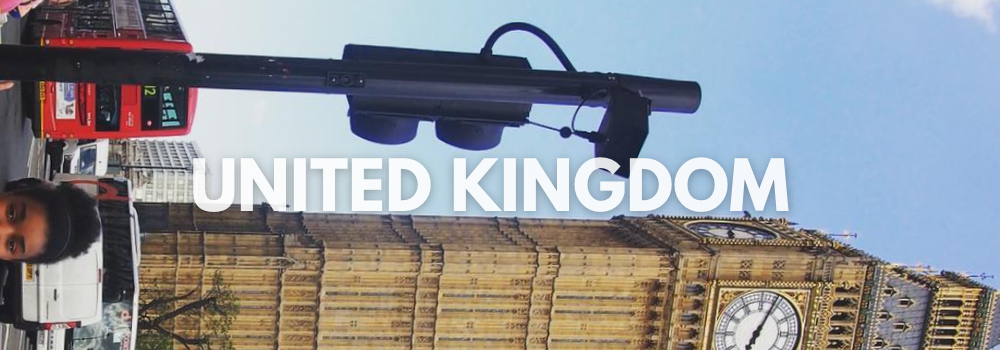
April 2023
First Time Visited
UK
Cities Visited
1
Times Visited
Nov-April
When should I visit?
Vodafone
Stay connected in the UK with a local SIM card from major operators like EE, O2, or Vodafone. Ensure your phone is unlocked and compatible with UK frequencies for seamless connectivity. Local SIM cards are widely available at shops and service providers, providing convenient access to data, calls, and texts throughout your trip.
7 days
How many days should I spend?
Souvenirs
Bring a bit of the UK home with tea sets, London memorabilia, or English tea and shortbread cookies. Fashionistas might love a Burberry trench coat or leather gloves, while bookworms can savor a classic British novel. These souvenirs will help you cherish memories of your trip.
The United Kingdom, consisting of England, Scotland, Wales, and Northern Ireland, is a popular travel destination for tourists from around the world. Here is some important information for travelers to consider before embarking on their journey. As someone who has traveled extensively throughout the U.K., I highly recommend investing in these 10 items before your trip. You’ll want a universal Travel Adapter to charge your electronic devices, as well as a portable Wi-Fi hotspot to stay connected on the go. I also suggest getting an RFID blocking wallet to protect your credit cards and passport from theft, and a portable phone charger to keep your phone charged while you’re out and about. A universal travel case is essential for keeping all of your electronics organized, and a waterproof phone case is a must-have for any unexpected rain. A British phrasebook will come in handy for communicating with locals, and comfortable walking shoes are a must for exploring all the top attractions. Don’t forget to pack a portable umbrella to stay dry during any surprise showers, and a Travel Scarf to keep you warm and fashionable while traveling. Trust me, these 10 items will make your trip to the U.K. much smoother and more enjoyable.
Visa and Passport Requirements:
Visitors from most countries can enter the United Kingdom for up to six months without a visa. However, it is important to ensure that your passport is valid for at least six months beyond the end of your stay and that you have a return ticket.
Safety and Security:
The United Kingdom is a generally safe country for tourists, but like anywhere else, it’s important to stay alert and aware of your surroundings, especially in crowded areas or at night.
Language and Culture:
English is the official language of the United Kingdom, and the country has a rich and diverse culture. From the ancient ruins of Stonehenge to the modern city of London, the UK offers a wide range of experiences for visitors.
Climate and Weather:
The weather in the United Kingdom can be unpredictable, with rain and cloudy skies common throughout the year. Summers tend to be mild and pleasant, while winters can be cold and damp.
Local Transportation:
The UK has an extensive transportation system, including buses, trains, and the famous London Underground. Renting a car is also an option for those who want to explore the countryside.
Currency Exchange:
The currency in the United Kingdom is the British pound. Visitors can exchange currency at banks, exchange bureaus, or at the airport.
Accommodation:
There are many options for accommodation in the UK, from budget-friendly hostels to luxury hotels. It’s important to book in advance, especially during peak travel season.
Local Cuisine in the United Kingdom:
British cuisine has a reputation for being hearty and filling, with favorites like fish and chips, shepherd’s pie, and bangers and mash. There are also plenty of international restaurants to choose from.
Top Attractions and Activities:
The United Kingdom is home to many famous landmarks and attractions, such as Buckingham Palace, Stonehenge, and the Tower of London. Visitors can also enjoy the theater scene in London’s West End or take a scenic drive through the Scottish Highlands.
Health and Medical Services:
The United Kingdom has a high standard of healthcare, with both public and private options available. Visitors should ensure that they have adequate travel insurance and consider getting any necessary vaccinations before traveling.
Unique Destinations:
Discover the hidden gems of the United Kingdom beyond its bustling cities. From the rugged beauty of the Lake District to the enchanting landscapes of the Scottish Highlands, each destination offers a unique blend of natural wonders and cultural richness.
Where We Have Explored:
Embark on a journey through the iconic destinations of the United Kingdom, including the historic streets of Edinburgh, the charming villages of the Cotswolds, and the majestic castles of Wales. Each region showcases the country’s diverse landscapes and rich history.
Historical Significance:
Uncover the United Kingdom’s fascinating past by exploring renowned landmarks such as Stonehenge, the Tower of London, and the ancient Roman baths in Bath. Dive into the stories of centuries gone by and discover the enduring legacy of this historic nation.
Wildlife and Nature:
Immerse yourself in the breathtaking natural beauty of the United Kingdom, from the rugged coastline of Cornwall to the serene tranquility of the Norfolk Broads. Explore national parks and nature reserves, where you can encounter diverse wildlife and experience the wonders of the great outdoors.
Cultural Experiences:
Indulge in the vibrant cultural scene of the United Kingdom by attending music festivals, exploring art galleries, and sampling traditional cuisine. From the lively pub culture of Ireland to the elegant tea ceremonies of England, there’s no shortage of cultural delights to discover in this captivating country.
GUIDE— KENYA
Exploring the United Kingdom was like stepping into a storybook filled with enchanting landscapes and rich history. From the moment I arrived in London, I was captivated by the bustling streets, iconic landmarks, and vibrant energy of the city. Strolling along the Thames, I marveled at the sight of Big Ben, Buckingham Palace, and the Tower Bridge, each one steeped in centuries of history.
Venturing beyond the city, I embarked on a journey through the picturesque villages of the Cotswolds, where charming thatched cottages and rolling green hills painted a scene straight out of a postcard. In Edinburgh, I was transported back in time as I wandered through the narrow alleyways of the Old Town and climbed to the top of Arthur’s Seat for panoramic views of the city below.
But it was in the wild landscapes of the Scottish Highlands that I truly found solace. Hiking through rugged glens, past ancient castles, and shimmering lochs, I felt a deep connection to the natural world around me. And in the evening, gathered around a crackling fire in a cozy pub, I listened to tales of Scottish folklore and sampled hearty meals of haggis and whisky.
Throughout my travels, I encountered warmth and hospitality at every turn, whether chatting with locals in a quaint village tearoom or sharing stories with fellow travelers in a bustling pub. And as I reluctantly boarded my flight home, I knew that the memories of my time in the United Kingdom would stay with me forever, inspiring me to return again and again to this magical land.
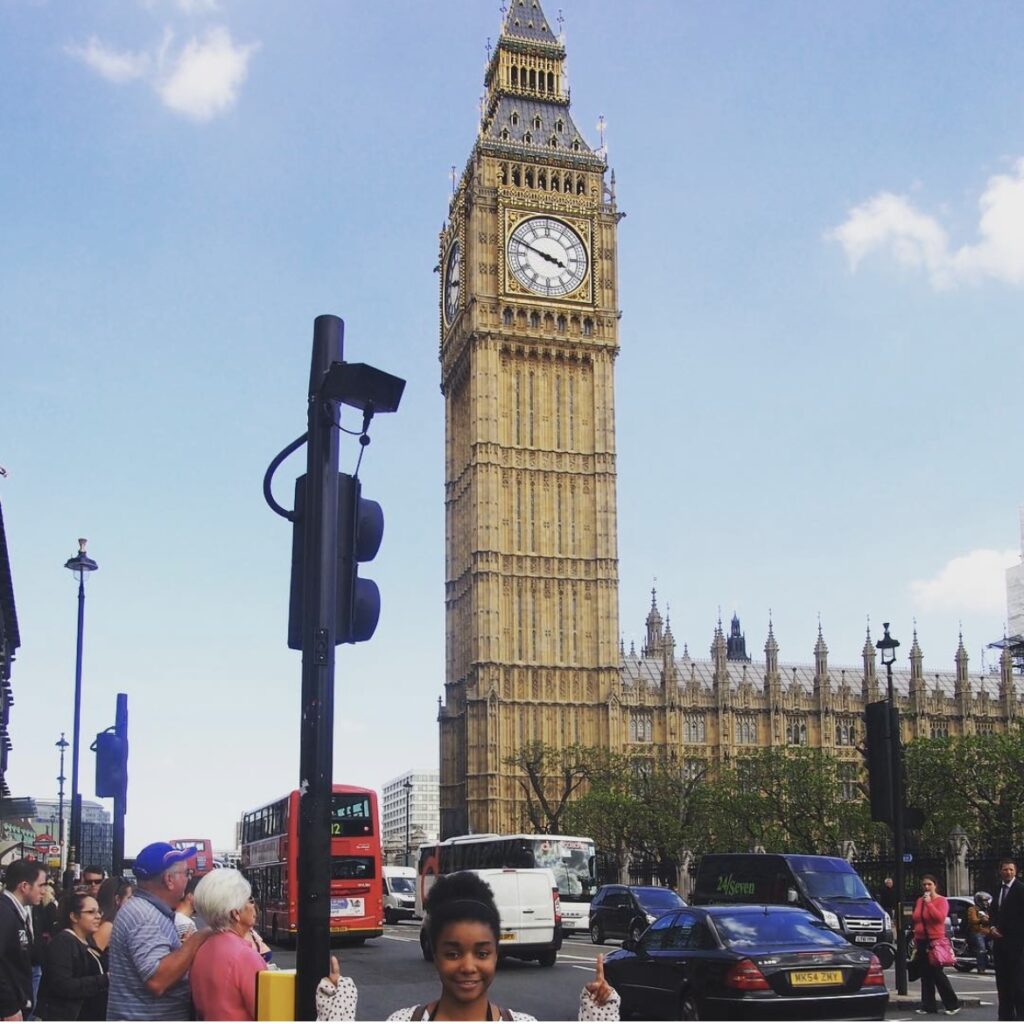

April 2023
First Time Visited
Cities Visited
Kogosi Warm Springs, Zuma Rock, Yankari National Park, Olumo Rock
2
Times Visited
December
When should I visit?
Airtel
Travelers in Nigeria can easily obtain a prepaid phone plan from local telecommunications companies like MTN or Airtel, offering affordable rates and nationwide coverage. Simply visit one of their many outlets across the country, present your identification, and choose from a variety of prepaid options to stay connected during your trip.
7 days
How many days should I spend?
Souvenirs
Souvenirs range from vibrant traditional textiles and intricate wood carvings to handmade pottery and colorful beaded jewelry, offering a glimpse into the country's rich cultural heritage. Whether browsing bustling markets in Lagos or exploring artisan workshops in Jos, there's no shortage of unique treasures to bring home as a reminder of your time in Nigeria.
Traveling to Nigeria requires thoughtful preparation, and packing things like a travel neck pillow, lightweight travel towel, and anti-theft backpack can enhance your journey. Don’t forget to protect yourself from mosquitoes with a repellent bracelet and ensure your electronic devices stay powered up with a solar-powered adapter and universal adapter. Additionally, it’s wise to carry a waterproof phone case to safeguard your device during outdoor adventures and a travel first aid kit for any unexpected emergencies. For seamless connectivity, consider renting a portable Wi-Fi hotspot to stay connected on the go, allowing you to navigate unfamiliar terrain and communicate effortlessly while exploring this vibrant country.
Visa and Passport:
For travelers to Nigeria, it’s essential to check visa requirements and ensure your passport is valid for at least six months beyond your intended departure date. Visa applications can be processed through Nigerian embassies or consulates or via online platforms.
Safety and Security:
While Nigeria offers rich cultural experiences, travelers should exercise standard safety precautions and remain aware of local conditions. It’s advisable to follow any travel advisories and respect local laws and customs. Emergency services are available throughout the country.
Language and Culture:
Nigeria boasts a diverse cultural landscape influenced by various ethnic groups and languages. English is the official language, facilitating communication for visitors. Embrace the country’s rich cultural heritage through interactions with locals and participation in cultural events.
Climate and Weather:
Nigeria experiences a tropical climate, with variations in temperature and rainfall across different regions. The best time to visit depends on your preferences, with dry seasons offering more favorable conditions for outdoor activities. Be prepared for hot and humid weather, especially during the rainy season. Local
Transportation:
Transportation options in Nigeria include buses, taxis, and domestic flights, with major cities having well-developed public transit systems. Renting a car may be suitable for exploring remote areas, while air travel is common for longer distances between states.
Currency Exchange:
The official currency is the Nigerian Naira (NGN), and currency exchange services are available at banks and exchange bureaus. Credit cards are accepted in urban areas, but it’s advisable to carry cash, especially in rural areas where electronic payment may be limited.
Accommodation:
Nigeria offers a range of accommodation options, from budget-friendly guesthouses to luxury hotels. Booking in advance is recommended, particularly during peak travel seasons. Explore accommodations in major cities, tourist destinations, and rural areas for diverse experiences.
Local Cuisine in Nigeria:
Indulge in Nigeria’s diverse culinary scene, featuring dishes like jollof rice, suya, and pounded yam with egusi soup. Street food stalls and local markets offer authentic tastes of Nigerian cuisine, reflecting the country’s cultural heritage and regional flavors.
Top Attractions and Activities:
Discover Nigeria’s top attractions, including natural wonders like Zuma Rock, cultural landmarks like the Osun-Osogbo Sacred Grove, and historic sites such as the ancient city of Benin. Engage in activities like wildlife safaris, beach outings, and exploring vibrant markets.
Health and Medical Services:
Nigeria’s healthcare system varies in quality across different regions, with private hospitals offering better facilities and services. Travelers should have comprehensive travel insurance covering medical expenses and access to emergency medical services in major cities.
Unique Destinations:
Venture beyond Nigeria’s bustling cities to explore unique destinations like the Yankari National Park, Idanre Hills, and the cultural richness of the ancient city of Kano. Each destination offers distinct experiences of Nigeria’s diverse landscapes, wildlife, and cultures.
Where We Have Visited:
Explore destinations like Banff, Montreal, and Ottawa. Each region showcases Canada’s natural beauty, cultural diversity, and historical significance.
Historical Significance:
Discover the historical significance of sites like Old Quebec, explore Indigenous history and culture, and visit museums in major cities. Canada’s history is shaped by Indigenous heritage, European exploration, and multicultural immigration.
Wildlife and Nature:
Experience Canada’s stunning natural landscapes through activities like hiking in national parks, whale watching on the coasts, and exploring the Canadian Rockies. National parks offer diverse ecosystems and opportunities for eco-tourism.
Cultural Experiences:
Immerse yourself in Canadian culture by attending cultural festivals, exploring Indigenous art and traditions, and engaging in local events. Canada’s multicultural society is reflected in its diverse arts, cuisine, and traditions.
Overall, Nigeria is a vibrant country with a rich culture and history, and with the right
preparation and precautions, visitors can have an unforgettable experience.

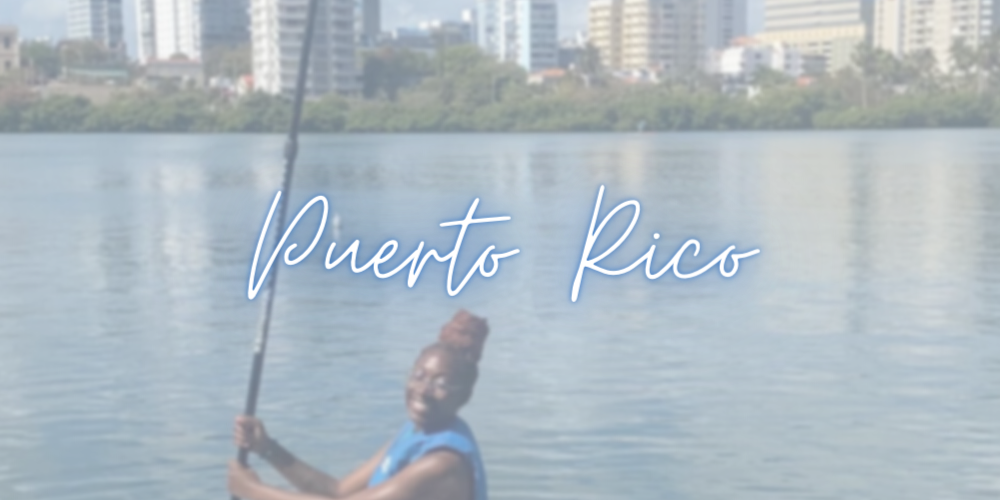
April 2023
First Time Visited
Old San Juan
Cities Visited
2
Times Visited
April-June
When should I visit?
T-Mobile, Claro, AT&T
Get a prepaid sim with a valid passport to register phone connection at a local phone store or the airport.
7 days
How many days should I spend?
Souvenirs
vejigante masks, hammocks, pottery, coffee, rum, hot sauce
When traveling to Puerto Rico, be sure to pack plenty of sunscreen, a water bottle, and
comfortable shoes for outdoor activities. You may also want to bring a waterproof phone case,
insect repellent, and a camera to capture all of the beautiful sights. Additionally, a travel
adapter and portable charger can be useful for staying connected and charged up while
exploring the island. It’s also a good idea to bring a Spanish phrasebook to help with
communication, and a hat or sunglasses for protection from the sun. Happy travels!
Visa and Passport Requirements:
If you’re a US citizen, you don’t need a passport to travel to Puerto Rico, as it is a US territory.
However, if you’re traveling from outside the US, you’ll need a passport and may also need a
visa. Check with the Puerto Rican consulate or embassy in your home country to find out
more.
Safety and Security:
Puerto Rico is generally a safe place for tourists, but as with any travel destination, you should
take precautions to ensure your safety. Stick to well-lit and busy areas at night, avoid carrying
large sums of cash, and be aware of your surroundings at all times.
Language and Culture:
Spanish is the official language of Puerto Rico, although many people speak English as well.
The culture of Puerto Rico is a blend of African, Taino, and Spanish influences, and is known
for its music, dance, and cuisine.
Climate and Weather:
Puerto Rico has a tropical climate, with temperatures ranging from the mid-70s to mid-80s
Fahrenheit year-round. The island is also prone to hurricanes, particularly between June and
November.
Local Transportation:
Puerto Rico has a good public transportation system, including buses and taxis. You can also
rent a car to explore the island at your own pace.
Currency Exchange:
The currency used in Puerto Rico is the US dollar, so there is no need to exchange money if
you’re coming from the US.
Accommodation:
Puerto Rico has a range of accommodation options, from budget-friendly guesthouses to
luxury resorts. You can also consider renting an apartment or villa if you’re staying for an
extended period.
Local Cuisine in Puerto Rico:
Puerto Rican cuisine is a mix of Spanish, African, and indigenous Taino influences. Some must try dishes include mofongo (a dish made from mashed plantains), arroz con gandules (rice with
pigeon peas), and lechón (roast pork).
Top Attractions and Activities:
Puerto Rico is home to many beautiful beaches, including Flamenco Beach on the island of
Culebra and Isla Verde Beach in San Juan. Other top attractions include the El Yunque National
Forest, the Arecibo Observatory, and the historic city of Old San Juan.
Health and Medical Services:
Puerto Rico has modern medical facilities, and visitors are advised to take out travel insurance
before arriving. If you need emergency medical treatment, head to the nearest hospital or call
911.
Unique Destinations:
Venture beyond the bustling cities of San Juan and Ponce to explore unique destinations in Puerto Rico. Discover the lush rainforests of El Yunque, unwind on the secluded beaches of Vieques, and immerse yourself in the colorful streets of Old San Juan. Each offers distinct experiences of Puerto Rico’s vibrant landscapes and cultural heritage.
Where We Have Visited:
Explore iconic destinations like San Juan, Rincon, and Culebra. Each region showcases Puerto Rico’s natural beauty, cultural diversity, and historical significance.
Historical Significance:
Delve into the historical significance of sites like El Morro and San Cristobal forts in Old San Juan, explore Taíno indigenous history and culture at museums like Museo del Indio, and visit colonial-era architecture in cities like Ponce. Puerto Rico’s history is shaped by indigenous heritage, Spanish colonization, and diverse cultural influences.
Wildlife and Nature:
Experience Puerto Rico’s stunning natural landscapes through activities like hiking in El Yunque National Forest, snorkeling in the bioluminescent bays of Vieques and Fajardo, and exploring the caves of Camuy River Cave Park. The island’s diverse ecosystems offer abundant opportunities for eco-tourism and wildlife encounters.
Cultural Experiences:
Immerse yourself in Puerto Rican culture by attending festivals like the San Sebastian Street Festival, exploring local art and traditions in communities like Loíza, and savoring traditional cuisine such as mofongo and lechón. Puerto Rico’s rich cultural heritage is reflected in its music, dance, and vibrant festivals.
In conclusion, Puerto Rico is a wonderful travel destination, with something to offer every type
of traveler. Whether you’re interested in exploring its rich history, soaking up the sun on its
beautiful beaches, or sampling its delicious cuisine, Puerto Rico is sure to leave a lasting
impression.


Feb 2024
First Time Visited
Canada
Cities Visited
1
Times Visited
Summer
& Winter
When should I visit?
Rogers & Bell
consider getting a local SIM card from Canadian mobile operators. Ensure your phone is unlocked and compatible with Canadian frequencies. SIM cards are available at local shops and mobile service providers.
7 days
How many days should I spend?
Souvenirs
maple syrup, Indigenous art and crafts, and Canadian-made products. Clothing items like tuques and sweaters are popular
Visa and Passport
Most visitors to Canada require a visa for entry. Ensure your passport is valid for at least six months beyond your planned departure date. You can apply for a visa at a Canadian embassy or consulate or through the online application process.
Safety and Security:
Canada is generally considered a safe destination. Exercise standard safety precautions and be aware of local conditions. Follow any travel advisories and respect local laws and customs. Emergency services are widely available.
Language and Culture:
Canada is a bilingual country with English and French as official languages. Embrace the diverse cultural landscape shaped by Indigenous, British, French, and other influences. Canadians are known for their friendliness and hospitality.
Climate and Weather:
Canada experiences diverse climates. The best time to visit depends on the region and your preferences. Summers are generally warm, while winters can be cold, especially in northern areas. Pack accordingly for the weather conditions.
Local Transportation:
Transportation options in Canada include buses, trains, and domestic flights. Cities have well-developed public transit systems, and rental cars are popular for exploring more remote areas. Travel by air is common for longer distances between provinces.
Currency Exchange:
The official currency is the Canadian Dollar (CAD). Currency exchange services are widely available at banks and exchange offices. Credit cards are widely accepted, but it’s advisable to carry some cash, especially in smaller establishments as they may require cash or Canadian debit cards.
Accommodation:
Canada offers a range of accommodation options, from budget-friendly hostels to luxury hotels. Booking in advance is recommended, especially during peak tourist seasons. Explore options in cities, national parks, and rural areas.
Local Cuisine in Canada:
Canadian cuisine reflects its multicultural society. Enjoy dishes like poutine, butter tarts, and tourtière. Seafood is popular on the coasts, and you can explore diverse culinary scenes in cities across the country.
Top Attractions and Activities:
Explore iconic attractions like Banff National Park, Niagara Falls, and the historic sites of Quebec City. Engage in outdoor activities such as hiking, skiing, and wildlife watching. Discover vibrant urban experiences in cities like Toronto and Vancouver.
Health and Medical Services:
Canada has a well-developed healthcare system. It’s advisable to have travel insurance that covers medical expenses. Medical services are accessible in cities, and emergency services are available nationwide.
Unique Destinations:
Beyond major cities like Toronto and Vancouver, explore unique destinations like Jasper National Park, the Fundy Coastal Drive, and the cultural richness of St. John’s. Each offers distinct experiences of Canada’s diverse landscapes and cultures.
Where We Have Visited:
Explore destinations like Banff, Montreal, and Ottawa. Each region showcases Canada’s natural beauty, cultural diversity, and historical significance.
Historical Significance:
Discover the historical significance of sites like Old Quebec, explore Indigenous history and culture, and visit museums in major cities. Canada’s history is shaped by Indigenous heritage, European exploration, and multicultural immigration.
Wildlife and Nature:
Experience Canada’s stunning natural landscapes through activities like hiking in national parks, whale watching on the coasts, and exploring the Canadian Rockies. National parks offer diverse ecosystems and opportunities for eco-tourism.
Cultural Experiences:
Immerse yourself in Canadian culture by attending cultural festivals, exploring Indigenous art and traditions, and engaging in local events. Canada’s multicultural society is reflected in its diverse arts, cuisine, and traditions.
GUIDE—Kenya

Japan
Indonesia
China
India
Jamacia
Columbia
Brazil
Argentina
Mexico






